
at WashU. (Special Issue, pgs 6-9)

DIWALI FIREWORKS Fireworks light up the night sky to celebrate Diwali. (Scene, pg 5)



at WashU. (Special Issue, pgs 6-9)

DIWALI FIREWORKS Fireworks light up the night sky to celebrate Diwali. (Scene, pg 5)

(Forum, pg 10)
ELIZA
MATT
JUNIOR
MANAGING
Six-hundred and ninety-eight days ago, the WashU women’s soccer team lost the Division III national championship to California Lutheran University. The Bears have not lost since.
In the 41 games since their 1-0 defeat on Dec. 2, 2023, the WashU women’s soccer team has won or drawn every game, holding a 38-0-3 record. The Bears have shut out their opponents in 30 of them and scored more than four times in 15 games. Last season, WashU set a program record with a 25-game unbeaten streak — they have extended it to 41 games through the 2025 campaign. Their 5-0 victory over the No. 16 University of Rochester on Oct. 24 marked number 40 in the streak.
To head coach Jim Conlon, the milestone victory was just another game. “[I] didn’t even know [about the streak],” Conlon said. “We’re just

24, the Bears delivered a massive win on the road against No. 4 Emory University on Oct. 26.
In any sport, to be the best, you have to beat the best. This season, the WashU men’s soccer team has been perfect against their ranked opponents.
A lot has seemingly gone the Bears’ way this season. After winning only eight games last season, the Bears entered the weekend on a 10-game winning streak, undefeated in conference play. Despite a streak-snapping loss against the University of Rochester on Oct.
Despite their loss to Rochester, the win over Emory was enough to catapult the Bears to No. 2 in the country in the United Soccer Coaches poll — their highest ranking in program history.
Going into the weekend, junior goalie Cal L’Hommedieu and the rest of the team knew that their success wasn’t something they should take for granted.
“We’re obviously happy with the way the season has gone so far, but we haven’t won any [titles]
26, getting crucial road wins over Rochester and No. 1 Emory University. With the victory, WashU returns to the No. 1 ranking in Division III — a spot it has held in 11 of the 17 United Soccer Coaches polls taken since the start of the 2024 season.
WashU started the weekend hot in Rochester, dominating a Yellowjackets team that has given the Bears issues in the past few seasons. In the 24th minute, senior forward Ella Koleno broke the ice with her sixth goal of the season. Sophomore midfielder Cami Colpitts scored in the 35th minute to extend the WashU lead. The Bears wore out Rochester in the first half with their physical play style, committing 10 fouls while not allowing a single shot on goal.
yet,” L’Hommedieu wrote in a statement to Student Life. “We’re focused on staying in the present moment and competing for each game individually and making the best out of whatever opportunity comes our way.”
After a strong 10-game winning streak, the WashU men’s soccer team looked flustered in a 3-2 loss to Rochester on Oct. 24. As WashU has done best this season, the offense started strong. After three close misses in the opening minutes, junior Ethan Wirtschafter notched a rebound goal off the right post in the 12th
From then on, the game became the Olivia Clemons show. Despite coming off the bench and playing just 41 minutes, the sophomore striker scored her second collegiate hat trick. Clemons’ three goals brought the score to 5-0.
“Gosh, it just makes every one of us so proud to be her teammate,” junior defense Regan Cannon said of Clemons. “We’re so proud of her and all that she’s done. She is the most humble person about it, and she will never brag about it herself.”
Despite the significance of the Bears’ Rochester, Sunday’s game at Emory was more important for WashU. The Bears, defending national champions and ranked No. 2 in the nation, faced No. 1 Emory University. Entering
minute. Wirtschafter now ranks fourth in goals scored across Division III, and senior Zach Susee notched his eighth assist of the season, putting him second in the University Athletic Association (UAA) for assists. This was the Bears’ first goal against Rochester since 2021, ending a four-year drought. However, it only took the Yellowjackets until the 24th minute to break through and tie the game at 1-1. Just a few minutes later, first-year Miles Newman found first-year Daniel
had lost in 2025. In the 23rd minute, the Bears struck first. Senior forward Grace Ehlert shot a bullet from the top of the box into the far-right corner to end the Eagles’ seven-game shutout streak. While WashU led on the scoresheet, Emory outplayed the Bears in the first half. By halftime, the Eagles had six shots, four corners, and possession of the ball for
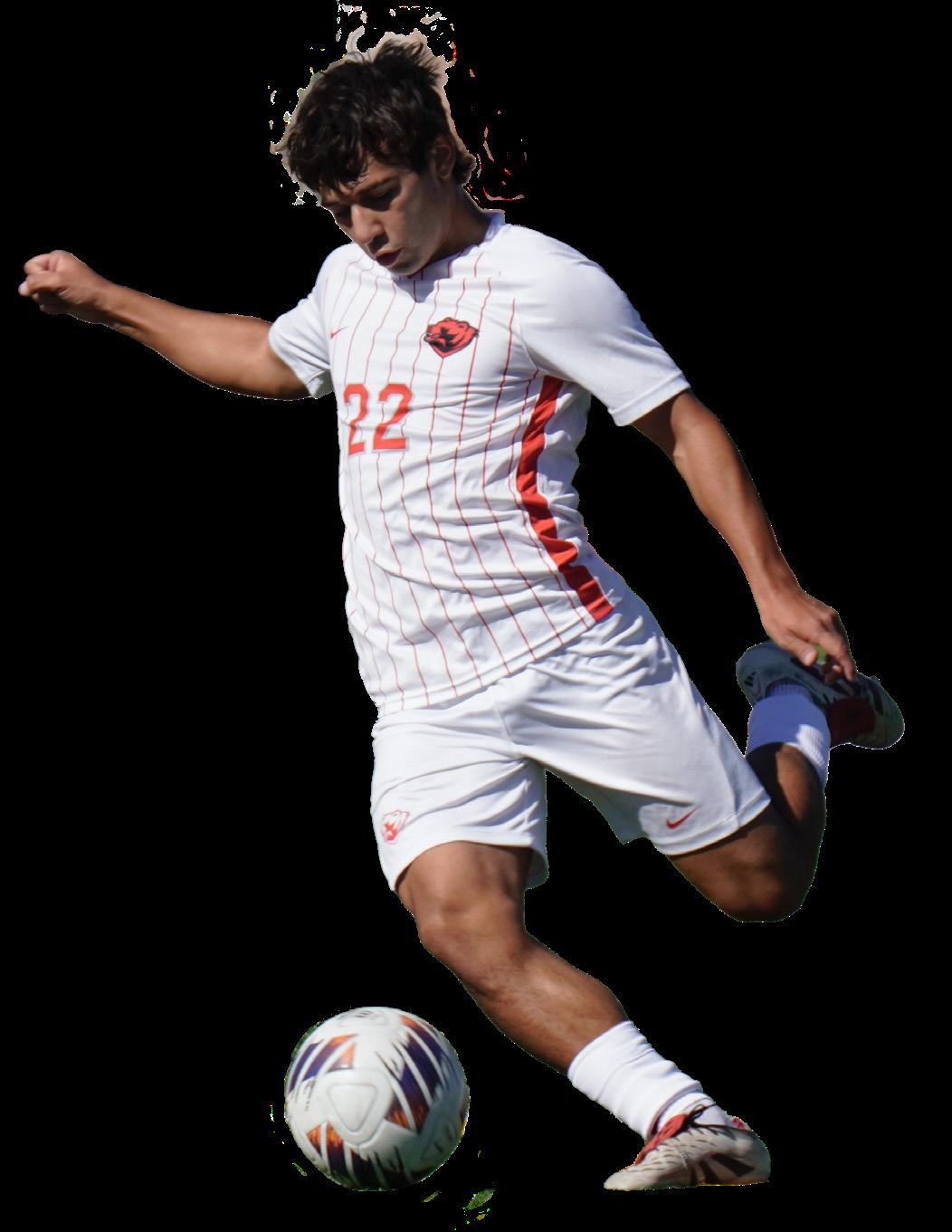
nearly scored, but a great save thwarted his efforts.
ELLA MESHOULAM CONTRIBUTING WRITER
A group of Native American students and alumni submitted a report to the WashU administration calling for increased academic options for Native American Studies (NAS) and greater outreach to prospective Native students. WashU has not confirmed whether they will institute these changes, but Vice Dean of Undergraduate Education Erin McGlothlin has confirmed that she will meet with the writers to discuss the possibility.
In addition to calling for the creation of a NAS department in the School of Arts & Sciences, the report requests a cluster hire of faculty with specialization in Native and Indigenous studies, and the implementation of a scholarship and recruitment
“The harsh reality is WashU was not doing enough and is still not doing enough...”
program for Native students.
As of this school year, 0.1% of WashU students identified as American Indian. This spring, there will be three NAS classes offered to undergraduates through the College of Arts & Sciences: American Indians and American Empire, Native American Religions and Politics, and Native American Storytelling — Healthy Land Practice.
Seniors Marissa Mathieson and Aspen Schisler, and Taryn Dixon and Amanda Young, class of 2025, started writing the report last fall in their class “Place, Space, and Power: Indigenous St Louis.”
Senior Marissa Mathieson, a Diné and founder of WU Native Alliance, said she was motivated to write the report by the lack of opportunities for NAS at WashU.
“The harsh reality is WashU was not doing enough, and is still not doing enough, and that is why we created the report,” Mathieson said. “To tell them how important it is, to tell them that we want it to be seen, and to tell them it is a worthwhile conversation that needs to be had in order to be an institution that claims to care about education.”
Dixon, Mathieson, Schisler, and Young worked alongside former postdoc Balraj Gill, former director of the American Culture Studies program Paige McGinley, and director of the Brown
School’s Buder Center Pamela Begay to edit and revise the report before sending it to administration on Monday, Oct. 13. Since then, McGlothlin has been in touch with the students who wrote it to schedule meetings.
When asked about the report, Anna “Dr. G” Gonzalez, Vice Chancellor for Student Affairs, emphasized the work the Student Affairs department is doing to celebrate Native American Heritage Month this November in an email to Student Life.
“We are proud to host a range of programs and events — a collaborative effort between staff and students — designed to celebrate and educate about Native American and other Indigenous communities,” Gonzalez wrote. “These campus-wide opportunities are open to all and underscore our unwavering commitment to fostering a deep and lasting sense of belonging for everyone.”
The Brown School’s Buder Center, founded in 1990, specializes in Native American Social Work. According to its mission statement, the center aims to “prepare future American Indian leaders to practice in tribal and urban settings, making significant contributions to the health, wellness and the sustained future of Indian Country.”
The center places an emphasis on recruiting Native students,
providing academic support, developing curriculum, and conducting research about Native communities. Even though it is currently inaccessible to undergraduates, the report identifies it as a possible route for collaboration.
“Undergraduate students are unable to enroll in these courses, access Buder scholarships, or participate in the center’s community outreach initiatives.
Collaboration between an Arts & Sciences Native American Studies Department and the Kathryn M. Buder Center is likely the fastest and most Native-informed method to create a sustainable NAS program at WashU,” the report reads.
Elaine Peña, the director of the American Culture Studies program, believes the program supports NAS in various ways as well.
“Most prominently, by hiring postdocs in Native studies such as Dr. Balraj Gil (who has now gone on to take a prestigious Chancellor’s Fellowship in the University of California system). Our strategic plan also counts on permanently hiring Native studies scholars,” Peña wrote in an email to Student Life.
Bret Gustafson, a professor of anthropology who has researched energy use in Native communities, sees this report in context with today’s current academic and political climate.
“I see it as fitting into an increasing demand,” Gustafson said. “The big challenge here is that we’re in a political moment where these are precisely the demands that are being targeted by the Trump administration.”
A question surveying support and interest in implementation of a NAS department has been included in Student Union’s yearly survey.
Mathieson shared her hopes for the report going forward.
“I hope the report is seen. I hope people start conversations from it. And I think people should read it honestly,” Mathieson said. “I don’t think it’s just meant for administration. I think this is a broader movement among everyone. This isn’t just me and my co-authors’ movement. This is everyone’s and this isn’t just for Native students, this is for the whole school.”
WashU is not the first school to begin considering the implementation of a NAS program. Princeton and Yale just implemented programs last year. Harvard, UPenn, and Northwestern established their programs in the 2010s. Other programs are decades old. In 1966, the University of Minnesota was the first university in the U.S. to start a NAS program. Cornell and Dartmouth soon followed in the early 70s.
‘A Conversation with Ta-Nehisi Coates’ discusses modern-day global oppression
understand that we are fighting,” Coates said.
Renowned journalist and author Ta-Nehisi Coates spoke on holding society accountable for continuing the fight against oppressive systems worldwide. The sold-out event was hosted by the John C. Danforth Center on Religion and Politics on Wednesday, Oct. 22, in Graham Chapel.
Coates and Yale University Professor of history, Black Studies, and law, Elizabeth Hinton, discussed a wide range of topics from the occupation of the Palestinian territories to the works of James Baldwin. Coates commented on many facets of today’s political and cultural landscape, also laying out his new book “The Message,” a work on perception, facing reality and oppression globally.
Coates began the discussion by recalling his previous visit to WashU in 2014, during which he spoke with organizers of the Ferguson protests. The protests were sparked by the shooting of 18-year-old Michael Brown by police officer Darren Wilson in Ferguson, a suburb of St. Louis, that year.
Coates said that as a journalist, his role is to carry on the fight for justice and for future generations.
“We choose to fight with our words; we choose to fight with our books. I want you to
Coates returned to themes of bravery in belief and confronting the past to look toward the future. There were frequent shouts and claps from the audience throughout Coates’ impassioned monologues.
He expressed frustrations with people’s aversion to resisting oppressive systems.
“There are people who don’t really know anything about resisting anything themselves,” Coates said.
Hinton, who has spoken with Coates in similar settings before, writes about race relations in the United States. She also conducts research on political violence and brutality.
She asked Coates questions about all three locations featured in “The Message” (South Carolina, the Palestinian territories, and Senegal). Coates described in depth his experiences visiting the Senegalese island of Gorée, where enslaved Africans were forced onto transatlantic slave ships from the 15th to 19th centuries.
Coates also spoke about his visit to the West Bank and Israel in May 2023.
Hinton said she was struck by the way Coates talked about cycles of violence in Jewish history in the last century.
“He was talking about … grappling with violence and grappling with what it means when people who have
suffered a horrible genocide are now … perpetuating violence, causing a genocide,” Hinton said in an interview with Student Life after the talk.
During the conversation, both Hinton and Coates discussed being motivated by anger in their writings.
“We can turn anger into something that can help us solve the source of the problem,” Hinton said.
WashU Assistant Professor of African & African American Studies, Themba Mbatha, said that the talk reminded him of how powerful Coates’ global perspective is because of the context it gives to his usual U.S.-focused discussion of race.
“What I was reminded of is just how globalist he is and how he thinks about these questions, which [is] very easy to forget, because he’s always placed within an Americancentric conversation,” Mbatha said. “He draws from different traditions [and] different histories to form his political voice.”
Former Congressperson for Missouri’s First Congressional District, Cori Bush, attended the conversation and said that she is inspired by Coates’ career and mission. She spoke specifically about feeling supported by his work while receiving backlash after her proposed ceasefire deal for Gaza in October 2023.
“[Hearing Coates is] just something to help feed my own soul,” Bush said. “Because I deal with so many

attacks and all the criticism, and so being able to hear someone else as they’re walking through their journey too, and how they’re processing it and how they stand strong, is helpful.”
Coates said that his involvement in conversations around the Palestinian territories stemmed from what he sees as historical connections and similarities between Black America, Palestinian communities, and Jewish communities.
“I’ve been in Palestine, and these people live in constant violence,” Coates said. “I don’t mean that metaphorically.”
Coates went on to explain that he felt that his own experiences with oppression in the United States mirrored those of the Palestinians he spoke with during his travels.
“America has a megaphone … because of what Black people are in this country, which is the bottom of the socioeconomic [pyramid],” Coates
said. Bush echoed this sentiment of wanting to speak out against oppression across a wide variety of causes and contexts.
“For me to [propose a ceasefire deal] as a Black woman — I’m not Palestinian, and people were like, ‘You Black, why do you care? Why are you sticking your neck out?’” Bush said. “It was like, ‘Because I understand oppression, and I understand suffering under discrimination and segregation, and so why wouldn’t I?’”
Coates also discussed the importance of communities that have faced oppression standing up for groups outside their own based upon their own experiences of oppression.
“We feel like … somehow our oppression has made us more moral. It has not. It has damaged us. But there’s wisdom we can draw from that damage,” Coates said.
A few attendees shared with
Student Life their reasons for attending.
“I needed to feel some hope,” Aviva Page, a St. Louis local, said. “He was very courageous in standing up for what’s right when people are scared to stand up for what’s right and factual.”
WashU Brown School alumna, Jane Lee, said she appreciated Coates’ perspective on generational trauma and suffering.
“What resonated with me was his part about [how] suffering and oppression doesn’t make a population or person more moral [or] better in any way,” Lee said.
Bush said she felt a sense of connection to the other audience members.
“Those who show up to hear from him … it’s the team,” Bush said. “It’s our team. It’s people [who] believe or have the same values that I do.”
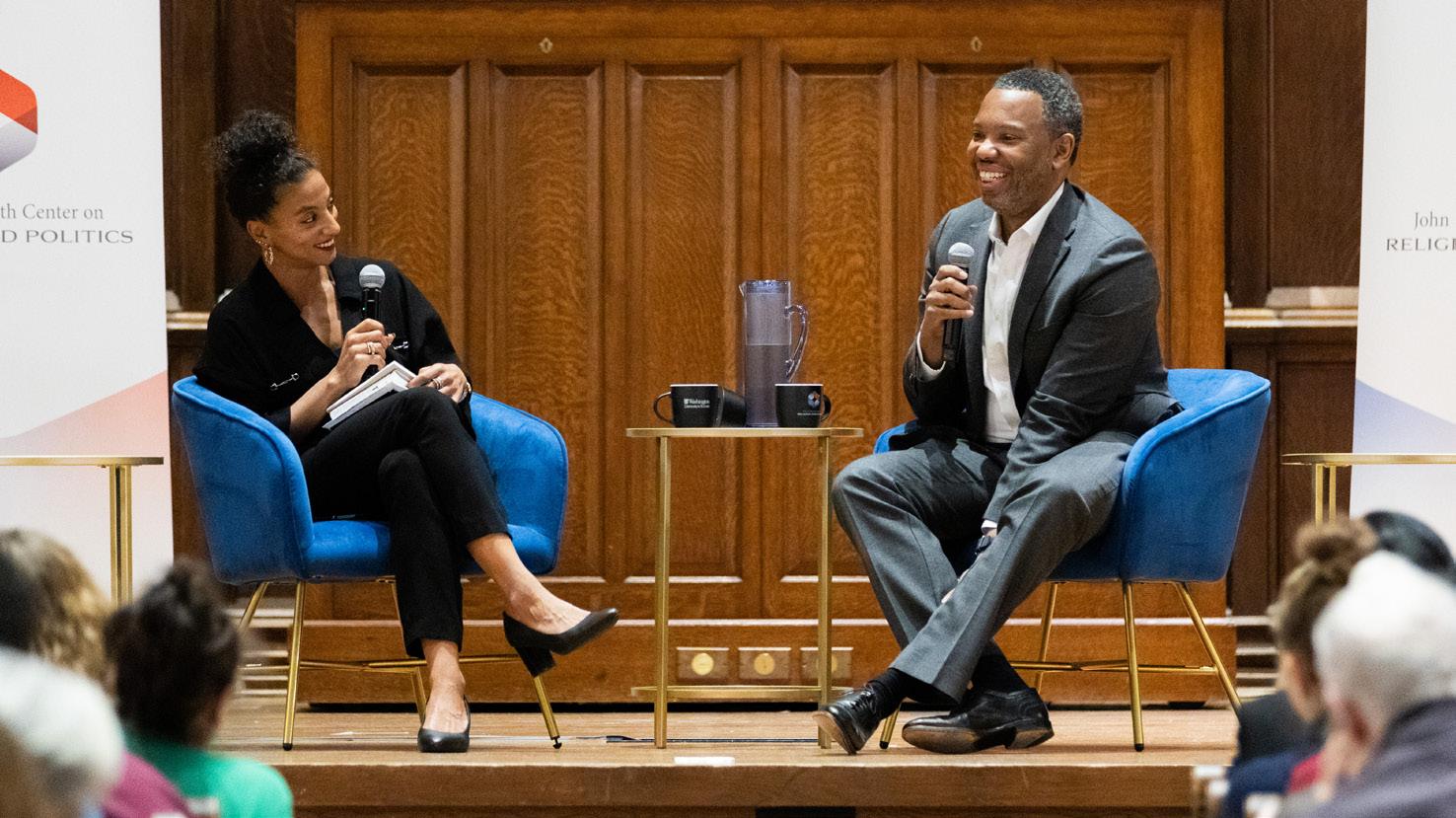
SELINA SON CONTRIBUTING WRITER
On Sept. 10, Student Life reported that the College of Arts & Sciences created a task force charged with exploring the potential reorganization or merging of six humanities programs and departments: African & African American Studies (AFAS); American Culture Studies (AMCS); Education; Global Studies; Jewish, Islamic, and Middle Eastern Studies (JIMES); and Women, Gender, and Sexuality Studies (WGSS).
Just over a month later, on Oct. 22, Student Life reported that the Dean of WashU’s College of Arts & Sciences, Feng Sheng Hu, officially disbanded the task force due to factors which included student and faculty opposition to the potential merger.
Following the news of the task force’s formation, faculty and students from affected departments mobilized through conversation to discuss the work of the task force and advocate for their fields.
Although the task force sparked concern among students, junior Ian Gomez, a Germanic Languages and Global Studies double major with a concentration in International Affairs, felt students’ concerns were heard.
“I am really, really happy with the Global Studies department as a whole and the strength of that community as a whole, because I was being actively engaged
by people,” Gomez said.
“People were willing to sit down and have meetings with me to explain what was going on and just provide me an informed perspective.”
Not only were faculty receptive to meeting with students, but Gomez also said the Global Studies department united and formed a strong community in response to the merger proposition.
“I’m very optimistic based off of the fact that we had a community that rallied around us really really quickly,” Gomez said.
“These conversations were being held, people were talking about it, meetings were being held. There was a lot of action that occurred, even if it wasn’t organized action.”
Organized action extended beyond individual departments. Student Union (SU) also took action after seeing the negative student response to the task force.
“We saw SU Senate very specifically, as kind of like an organizer between many different actors on campus — of course, mostly undergraduate student actors,” senior Ella Scott, SU Vice President of Engagement, said.
In response, SU launched a zine project — a creative initiative designed to celebrate and advocate for the six departments under review.
“Although the task force [is] currently done, I would argue that students probably don’t feel like it’s the end. In this whole attack on higher education, which happened to be coinciding with this proposed task force — whether or not those are connected, I can’t say — it’s a scary time to be a student,” Scott said.
In Scott’s view, the dissolution of the task force left behind an energized student body and discussions without a clear ending. She said that if students wanted to continue the conversation, they should contact her at engagement@su.wustl.edu.
“We don’t just want to drop all this effort that we started,” Scott said. “There are a lot of other avenues that we can take to stay engaged with all of these organizations and all these students. So we’re kind of in that discussion now, like where do we go from here,” Scott said.
For Gomez, the collective strength of the communities found through the work of the task force brings him hope.
“We were going to publish six separate zines, almost like six editions of the same zine. It was going to be ‘Our Departments Matter,’ and then each individual department would have … [a] creative space to represent why these six departments individually matter and why they’re very important to students,” Scott said. The zine project is currently suspended due to the disbanding of the task force. Nonetheless, SU hopes to channel the students’ advocacy toward other projects and initiatives.

FRITZ MURRAY

CONTRIBUTING WRITER
Watching a movie on your first date? Bold choice. I have faith in you, though. You can make it work. All you have to do is pick a good movie — one that’s engaging, sets a good mood, and sparks good conversation so you can get to know the person you’re sitting next to.
Your date says they know a good movie. The Rotten Tomatoes score agrees with them. It seems like a good
pick, so sure, why not put that one on? What’s the worst that could happen? Well, you could ruin the date, for one. There are tons of acclaimed movies out there, but not all of them translate well to a first date. This list is a compilation of 10 such movies, each excellent and well worth your time, but awful to watch with someone you just met. Without further ado, here’s to your awful first date, and here’s hoping your date never puts one of these on.
There’s a lot to love about “2001.” The soundtrack is iconic, the sci-fi visuals are stunning even after nearly 60 years, and the supercomputer AI antagonist HAL 9000 is delightfully sinister and increasingly relevant in a ChatGPT-riddled world. Unfortunately for you, the movie sports a hefty twoand-a-half-hour runtime, and you can feel it. Get hyped for minutes-long sequences of characters silently drifting through space, advancing the inscrutable plot at a snail’s pace! Thank God for your filmbro date, though, who’s pausing the movie every five minutes to tell you how they filmed that scene.
It’s Jim Henson! The “Muppets” guy! This movie is an incredible feat of creativity. The puppets are fantastic. The visuals are surreal and breathtaking. David Bowie is smoking hot as Jareth (the goblin king), and his campy performance and oppressively ’80s hairstyle are second to none. On the other hand, this movie does not get nearly enough
“La
credit for how unnerving it is. The puppets range from eerie to downright terrifying (looking at you, hand tunnel). Worst for your little tryst, though, the puppets are deeply unsexy. Whatever mood you had, it’s surely not going to survive Hoggle, the uncomfortably detailed troll, or the horrifying Fireys, the bird-like creatures with detachable limbs.
At first glance, “La La Land” feels like a great pick. It’s funny, energetic, and the first act features a sweeping romance between
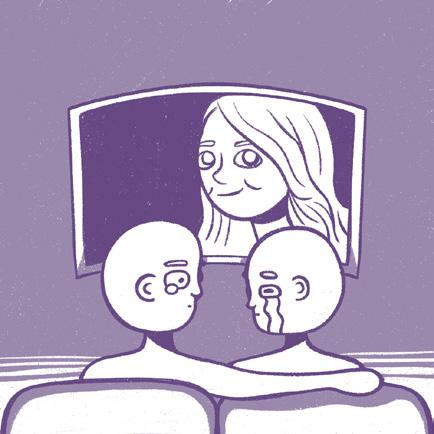
characters played by Ryan Gosling and Emma Stone. Who doesn’t love them? But as the movie carries on and their relationship starts to crumble, you might start to feel worse about your pick. The two characters are fundamentally incompatible, but they never get over each other. Definitely the sort of stuff you want to be thinking about while starting a relationship.
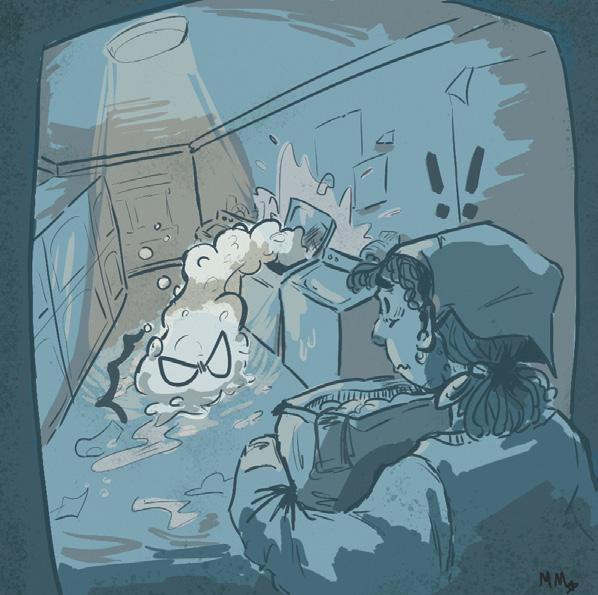
MIMI MILORD | CONTRIBUTING ILLUSTRATOR
Horror movies are risky on a first date, but they can work. “Eek,” you can say, before clinging to your date in the dark. Romantic! But “Misery” is an odd pick. This movie follows the
“Call
This is a baffling pick. Don’t get me wrong, this movie is gorgeous — perhaps even aesthetically perfect. The Italian countryside glimmers, and the color grading lends the film a hazy, nostalgic glow. The Sufjan Stevens-heavy soundtrack is another standout (seriously, if a failed first
story of an author (James Caan) who’s rescued from a blizzard-induced car wreck by his number-one fan (Kathy Bates), who begins nursing him and his broken legs back to health. When she finds out he’s killed off
date has you torn up, go cry to those songs sometime). Where this movie enters bad first date territory is in its main romance between gangly 17-year-old Elio (Timothée Chalamet) and full-grown man Oliver (Armie Hammer), a 24-year-old graduate student studying Greco-Roman
Really? You picked “Moneyball”? Kiss notions like “important female characters” goodbye in this baseball movie. Most of the action in this film takes place in the dingy conference rooms and offices of the Oakland A’s aging stadium as characters
Billy Beane (Brad Pitt) and
“Juno” (2007)
“Juno” is 99% of the way to a perfect first date movie. It’s romantic, it’s comedic, it’s, well, a romcom — and a nearly perfect one. The story is heartfelt and witty, the pacing is excellent, and the exploration of teenage pregnancy functions perfectly in the film. Oops! Yeah, this is a teen pregnancy movie. Lots to chew on for a first date! At least it’ll get you thinking about safe sex, if that’s miraculously still where the date is headed.
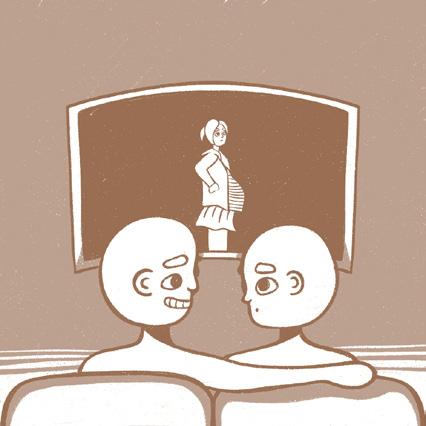
First Place: even the machine is pissed that you keep leaving your laundry in it
Mia Burkholder, StudLife Staff Member
Second Place:
Peter Brand (Jonah Hill) fight to take the soul out of baseball scouting and replace it with raw statistics. As you might imagine, the Oakland A’s are a total boy’s club. Billy Beane is supremely divorced, and the only female characters are his ex-wife and child, who are on screen for five minutes
Want to get into uncomfortably deep conversations on your first date? Watch
“Past Lives.” This movie centers on the question of “what could have been?” as it follows Nora (Greta Lee) as she reconnects with a childhood love, Hae Sung (Teo Yoo), from before she moved from Korea to New York. The only holdup is that Nora is already married to a guy in the U.S. “Past Lives” is subtle, moving, and well worth a watch. In terms of your first date, however, the main conversation this movie invites is talking about past relationships, which sure doesn’t seem like the best way to start this one.
“Double, double toil and trouble!” How many times does your Mom have to tell you that one Tide pod is more than enough before you actually use only one?!
Denise Bader, WashU Parent
Third Place:
Laundry stank comes alive after sitting overnight Avi Holzman, WashU Alum
her favorite character in a new book, however, she forces him to rewrite the ending. Bates’ performance is both outstanding and nightmarish, and Caan’s character’s lack of mobility makes the film a painfully
history. Chalamet is alarmingly young-looking, and Hammer looks like he could be 30. The emotion one feels when looking at them is, quite frankly, panic. The movie does not expend much energy dissecting this power imbalance, and even if it did, I’m not sure you’d want to watch it on a first date.
tops. Not the most relatable choice for women on a first date. Unfortunately, the guy who put this on was right. It’s great. It’s a refreshing take on the tired genre of sports movies, and the dialogue is smart and snappily written. Have fun picking desiccated Zyns out of your couch cushions when this guy leaves, though.
What did you expect? It’s about a messy divorce. The movie is an absolute acting tour de force from both Scarlett Johansson and Adam Driver. The screenplay handles the topic deftly, and the characters feel painfully believable. That being said, how on earth did your date convince you to watch this? What was the pitch? Maybe the date was doomed from the start.


tense watch. The movie is just specific enough to begin raising some questions about your date. And if they picked this, then I’m terribly sorry to inform you, but they are, in fact, a serial killer.
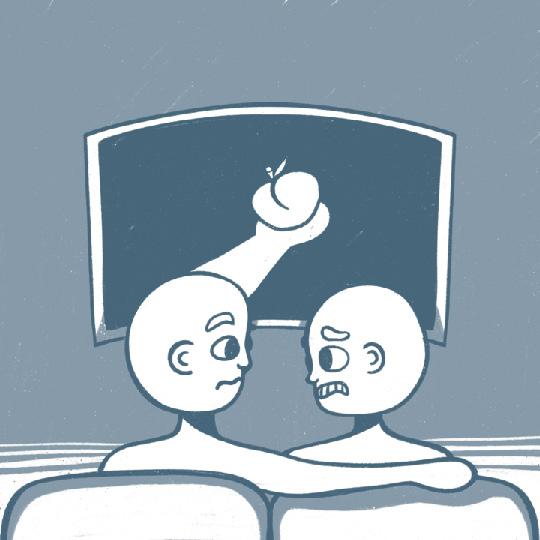

I have genuinely no idea how your date convinced you to watch this one. Philip Seymour Hoffman plays a priest at a Catholic grade school, who may or may not be a pedophile (hence “Doubt”), opposite Meryl Streep, who plays the strict head nun who’s trying to take him down. This movie is chock-full of stunning acting performances and thought-provoking themes, but the prevailing emotion incited by the film is anxiety, which might not be how you want to feel on a first date. Just a thought.
ARTICLE ILLUSTRATIONS BY ALIANA THOMPSON | CONTRIBUTING ILLUSTRATOR TITLE ILLUSTRATIONS BY TILLIE SZWARTZ | CONTRIBUTING ILLUSTRATOR

FRITZ MURRAY | CONTRIBUTING ILLUSTRATOR
Scan the QR code to enter your submission by 11:59 p.m. on Monday.
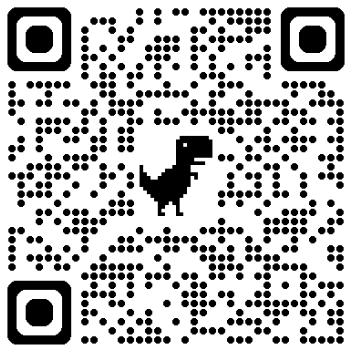
After 2 1/2 years of development, the Saint Louis Art Museum (SLAM) unveiled German artist Anselm Kiefer’s “Becoming the Sea” exhibit on Oct. 18, 2025. The exhibit, which encompasses nearly 30,000 square feet, has proven to be one of SLAM’s most ambitious undertakings in recent years. The exhibition is multipronged and reflective of Kiefer’s personal ambition to touch the hearts and minds of his viewers.
Kiefer’s artistry is deeply influenced by his life experiences, made apparent throughout the exhibition. It features paintings he made while his wife was in the hospital, artworks inspired by his studies as a constitutional lawyer, and pieces that delve into themes of anti-nationalism and philosophy.
The inspiration for this strenuous project came from Kiefer’s 1991 visit to St. Louis, during which he is said to have strongly
resonated with the deep history of the community and the Mississippi River. His connection to the region is that his childhood home is on the German Rhine.
“[It is] unique of him to build this exhibition to connect with the St. Louis community,” said Melissa Venator, SLAM’s Andrew W. Mellon Foundation Assistant Curator of Modern Art.
The making of this exhibit was no small feat.
These enormous paintings were shipped across the Atlantic Ocean, many coming from Kiefer’s studio in the suburbs of Paris, and needed to be cut in halves, thirds, or even fourths to accommodate shipping dimension restraints.
“[It was] an incredibly ambitious, huge financial undertaking, huge logistical undertaking [with] paintings the length of a city bus,” Venator said. SLAM placed an enormous importance on interactivity and community outreach, including family events,
an interactive guide, and a showing of Kiefer’s documentary on Nov. 21-22. Kiefer went so far as to request that the museum not implement stanchions (the restrictive wire typically in front of art pieces) on any of his paintings or artworks, aiming to encourage full immersion and personal understanding, as he desired the interpretation of his artworks to be entirely up to the visitor.
“[Kiefer] wants to prioritize the visitor’s encounter with the artwork,” Venator said.
The exhibit’s visitor guide contains limited descriptions of each piece, an intentional decision made by the artist. SLAM copyeditor Anne HandleyFierce was responsible for working with Kiefer to create visitor descriptions and spoke on how particular and interesting it was to collaborate with an artist whose pieces are still evolving. It played a major role in differentiating this exhibition from many others.
“[It is] different to work with a living artist,”
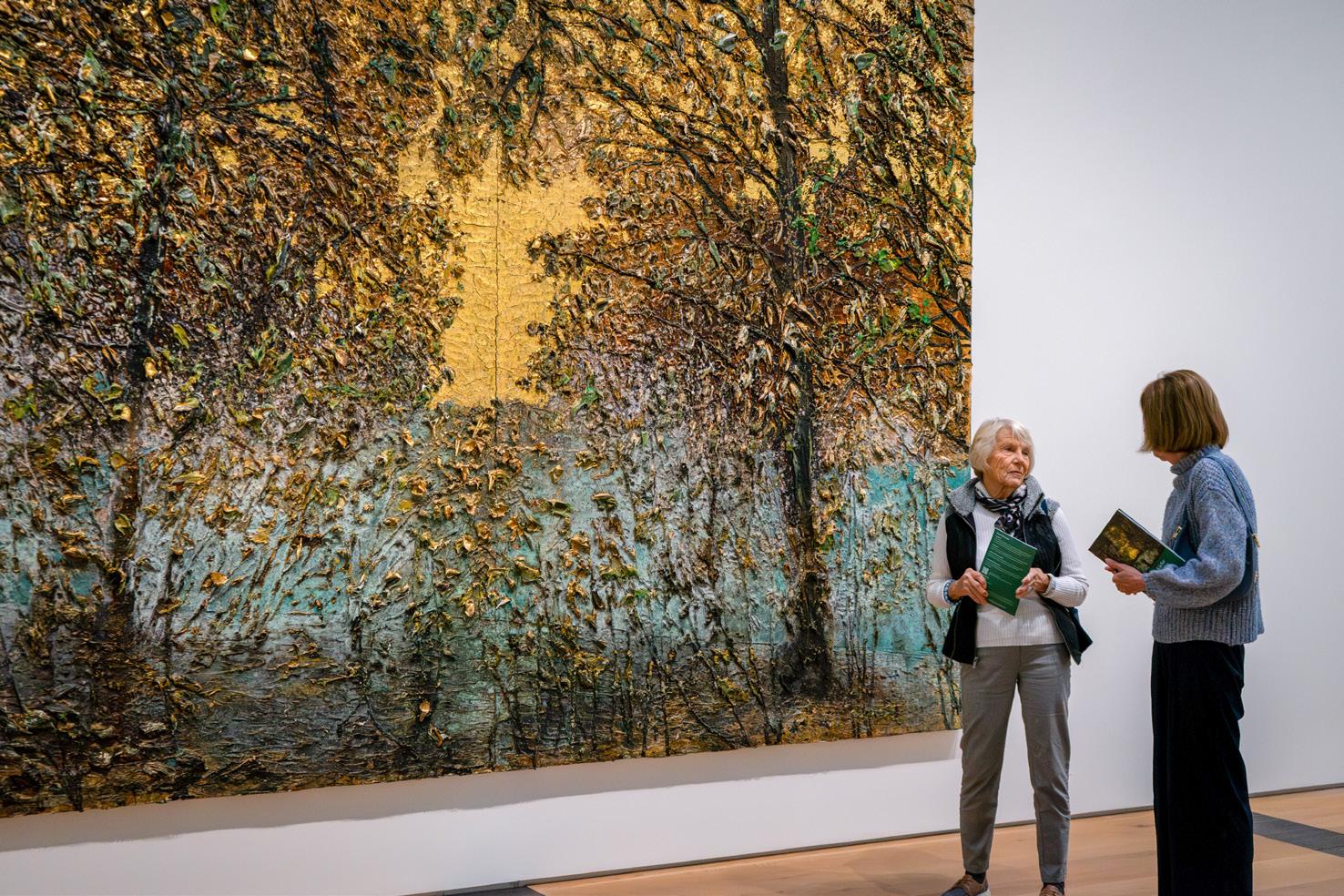
Handley-Fierce said. Kiefer views his art as perpetually evolving, downplaying the importance of maintenance and protection for the sake of letting the pieces change naturally. Transformation is a major motif in this exhibit. In many ways, SLAM had to undergo a transformation of its own to fit Kiefer’s vision by making unconventional
changes to its typical curation protocols.
A prime example of this is the museum’s window shades. Shades are typically lowered to accommodate the light-sensitive nature of artworks, but Kiefer requested that the shades be kept up.
“[This is to] encourage connection with the outdoors,” Venator said.
As a whole, the exhibit is filled with deep, historical richness and meticulous artistic decisions. With the immense support of the SLAM, Kiefer’s exhibition aims to have a profound impact on the St. Louis community — encouraging risks, invigorating new ideas, and, as Venator would describe it, inspiring its viewers to be “a river unafraid of becoming the sea.”
“Here’s to the hearts that ache, here’s to the mess we make,” whispers Emma Stone in the devastating audition scene of the iconic romancemusical “La La Land.” For the first time since the movie’s release in 2016, you can experience that powerful love story in a dark theater again, but this time with its music at the forefront.
On Nov. 1 at the Fabulous Fox Theatre, Grammynominated Turkish musician
Esin Aydingoz will conduct a highly anticipated staging of “La La Land in Concert.”
Aydingoz, who arranges and composes music for film and TV, will conduct a full orchestra and jazz band totaling between 65 and 80 musicians, who will play the film’s famous score alongside a live screening of the film.
“La La Land” tells the story of Mia, an actress, played by Stone, and Sebastian, a jazz musician, played by Ryan Gosling, falling in love while trying to make it in the arts industry of Los Angeles. It
took home six Oscars back in 2016, including Best Original Score and Best Original Song.
In an interview with Student Life on Oct. 17, Aydingoz discussed the pressure of presenting the score just right, the feeling of conducting a massive ensemble of musicians, and the Grammyand Oscar-winning composer of “La La Land,” Justin Hurwitz, asking her personally to conduct this concert.
“[La La Land] was actually the first ever film me and my husband watched at the movie theater,” Aydingoz
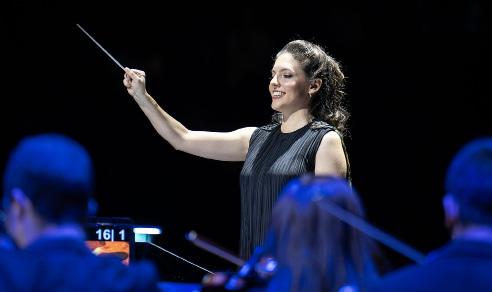

said. “When Justin asked me to conduct this, I think I literally wrote back to him in two minutes. I was like, ‘Justin, I would die! Thank you! Yes!’”
Aydingoz is no stranger to audience expectations, having previously conducted orchestral performances of “Coco” and both the animated and live-action versions of “The Lion King” films. Aydingoz noted that audience expectations are not intimidating, but invigorating to her as a conductor.
“All of these four movies [‘Coco,’ both ‘Lion King’s, and ‘La La Land’ are] so loved and there’s such a huge fan base. It’s a guaranteed good show because even when there are small hiccups with our performance, let’s say, the intonation isn’t great, the movie is so beautiful that it’s still a magical experience.”
As a conductor, Aydingoz’s role is to provide a unique sound and to demonstrate the changing emotions throughout the film.
“Any energy that I bring in plays a role in what sound I receive from the orchestra,” Aydingoz said. “I feel like my energy and my movement [shapes] silence and makes the musicians play. I try to be in the movie, and if it’s a sad scene, I shouldn’t be like, ‘Ha ha ha, this is great.’ I have to feel it, and however many musicians are in front of me, I should help them feel it too.”
Aydingoz describes her role as a “policeman.” She has to tell each of the dozens of musicians when to come in and out, which for some performers includes up to six minutes of interludes between their own parts. In her personal score, Aydingoz keeps track of each entrance and exit and also has to flag moments of difficulty that require her utmost attention.
“In ‘La La Land,’ there are so many moments where Ryan Gosling is playing virtuosic piano pieces, and for the magic to happen, we have to really nail the synchronization aspect of those,” Aydingoz said. “So I spend a lot of time listening to those scenes so that [we] can really nail it. But of course, it’s not just about me, it’s about the pianist, how much he’s prepared or she’s prepared, and then us being in
the moment and creating that synergy with the movie.”
“I feel like the beauty of the soundtrack is also in how many different genres there are in it, because you hear musical theater songs,” Aydingoz said. “You’ll hear gorgeous jazz pieces. You hear intimate chamber orchestratype romantic cues. But then you also get pop, … so there is something in it for everyone.”
Aydingoz has conducted a number of shows throughout her career, and she emphasized just how invigorating it is to present to a joyful audience.
“I could feel the energy of 3,000 people behind me cheering for the character,” Aydingoz said. “And I’ve never witnessed that kind of love before. And I know it’s not for me, it’s for the movie … but having the responsibility to bring joy to that many people? That makes me fly, and it’s a whole other level of happiness that I’m just beginning to learn.”
The film is over two hours long, and the concert presents even more music and interludes than are available on the movie’s official soundtrack.
Aydingoz listened to the entire score over 45 times to learn the film’s music and tempo changes before even beginning to make notes in her score.
Aydingoz ended up working closely with Hurwitz, the film’s composer, over the course of her preparation for this concert.
“I’m such a detail-oriented person in my own composing and arranging work. I care about every single part of every single instrument. Justin [Hurwitz] is the same. We had this two, three-hour Zoom call … and we went through the whole score and he told me what matters to him. … So I really enjoyed working with him and I’m so grateful that he gave me the time to do that. And when he did this [show] recently in Los Angeles, … I also got to see the rehearsals. … So seeing his process, to me, that’s the most magical part.”
Aydingoz prides herself on being as accurate as possible throughout the film. Aside from some jazz moments when the musicians improvise a little each night, she aims for the score to be as perfectly
matched to the movie as possible.
“People are not coming to see my interpretation of it. If you do classical music, the audience comes to see your version of it. And in the film music world, we do justice to the concert if we try to be as close as possible to the original. But what’s beautiful about our concerts is music is at the forefront, they mix it in a way that music is louder. So I feel like me and the audience, we get to enjoy the film in a new way that we haven’t before.” Aydingoz said she normally practices with just the music from the film. When she is conducting the movie with its full audio, however, the emotional scenes add an emotional wrinkle for both her and the audience.
“I’m like, ‘Esin, baby girl, you can’t focus on the dialogue right now or you’re gonna cry.’”
While arranging and composing can be fun, Aydingoz finds the most happiness in getting to share in a common musical experience with the thousands of people watching her show each night.
“Even if I’m scoring the world’s best movie, I want to share it with people and I want to see their excitement of consuming that art. And there is something gorgeous about not just doing music, but music needing acting and dancing or animation or whatever it is. At the end of the day, I like contributing to something bigger than me. … In conducting, what is so beautiful is you share it with the orchestra, and you also share it with the audience.”
“This is something I can’t ruin. I have to be playing my A-game and any problem that occurs, I can’t be responsible for it. … But once I’m there with the orchestra and once they play the first note, it’s such an incredible feeling. You forget your fears and you just fly.”
This will be Aydingoz’s first time conducting in St. Louis, and she will be available after the show for anyone wishing to meet her.
Cookie dough, brownie bites, Frosted Flakes, strawberries, bananas, Cocoa Puffs, and more — with 24,379 possible ice cream orders, it would take more than a semester of free scoops to try them all. Luckily, Campus Creamery’s giveaway winners are giving it their best shot.
Campus Creamery, opened in 2023 by thensophomore Harrison Lieber, has quickly become a cornerstone of the South 40. With a whimsical space theme and ice cream album covers lining its walls, the Creamery, located in a Gregg House storefront, serves sweet treats late into the night.
Lieber began plotting out the idea for the business almost as soon as he set foot on campus in August 2021. After a year and a half spent building out his idea with the help of the Skandalaris Center for Interdisciplinary Innovation and Entrepreneurship, Lieber’s dream was realized.
Since its opening two years ago, Campus
Creamery’s offerings have expanded to include waffles, catering, and even branded merchandise. Lieber, now a senior, credits his growth and success to the campus that the Creamery serves.
“I thought the community on the South 40 was just so special,” Lieber said. “The main priority of the business is obviously [that] it needs to make money. But the reason I started [Campus Creamery] was I felt like campus needed it, and I wanted to do something cool and community-oriented.”
Campus Creamery’s dedication to the WashU community is apparent. In addition to its annual Halloween costume contest, the Creamery also runs an ice cream giveaway each semester. For the price of a like, a comment, and a repost, participants earn a chance to win a daily ice cream for the entire term.
The giveaways began in the spring of 2023, as part of Campus Creamery’s grand opening, and have been a recurring promotion every semester since. Besides the fun competition, the giveaways also act as a self-sustaining advertising tool.
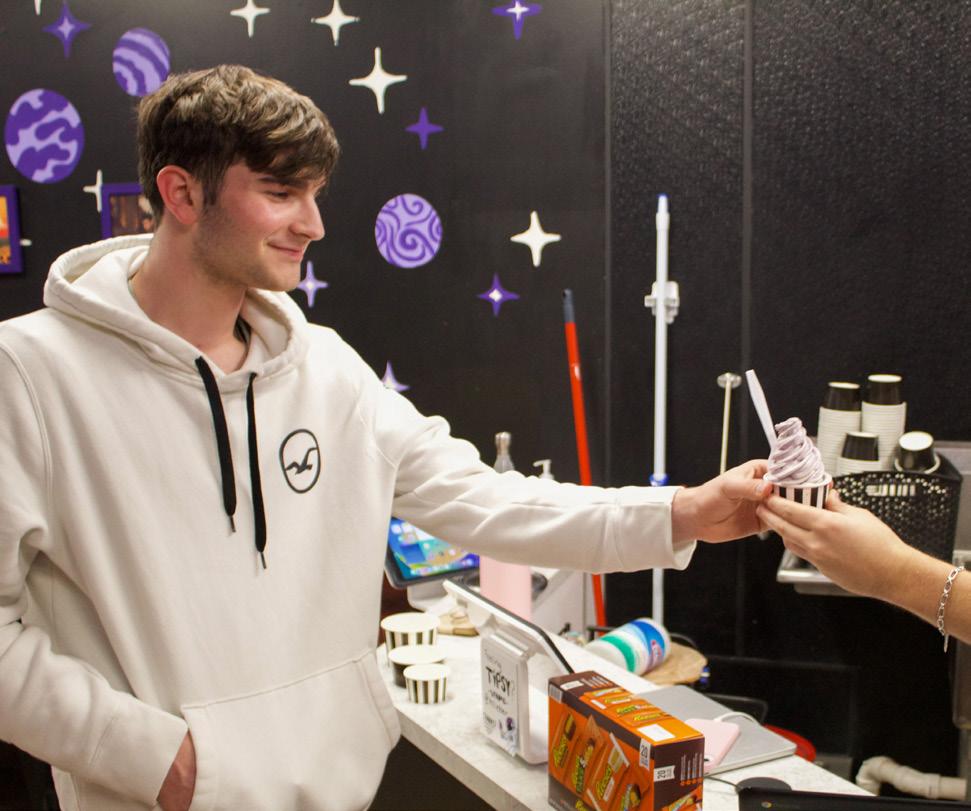
“Instead of paying for marketing and trying to get in front of everyone’s face and sending emails out and doing this huge marketing campaign, [the giveaway] is the only marketing that we do,” Lieber said.
The free promotion works; the giveaway post in 2023 racked up 483 likes and 273 comments from vying ice cream lovers, while the most recent giveaway this fall garnered 272 reposts and shares. By tapping into the interconnectedness of the South 40, the Creamery has found a way to integrate itself into the community.
“[Campus Creamery] is in this really isolated and interwoven community where so many people know each other, especially on social media,” Lieber said. “You have mutuals with me, and then that person has mutuals with you, and that person has mutuals with that person. Ten people post it, 100 people see it, and when those 100 people spread it, 1,000 people see it.”
Out of those anecdotal 1,000 are a couple of select, lucky winners who suddenly find themselves with a windfall of ice cream. First-year Itohan Salami, who won the giveaway this fall, has devised a system to share her wealth on days when she’s not ordering her favorite dairy-free vanilla with cookie dough, brownie bites, and Oreos.
“My friends curated a system,” Salami said. “Somebody has Monday, somebody has Tuesday, and so on. They’ll text me, like, ‘Can I have my ice cream today?’”
Salami’s strategy ensures that she gets the maximum value from her winnings, although Lieber says the
benefits from the giveaway alone more than make up for the cost of the free ice cream.
“A couple of people get really lucky and get to have a bunch of free ice cream,” Lieber said. “But … even if they come every night, I imagine that our sales in the first week … make up for it.”
For first-year Mya Silveyra, her semester of free ice cream ties her not only to the WashU community but also to her family in Chicago. Here, she gets vanilla ice cream with Fruity Pebbles, Froot Loops, and brownie bites, but any ice cream is always a welcome treat.
“I love ice cream,” Silveyra said. “It’s so classic for my family … On nice evenings, we’ll … get ice cream and then just drive around … Every time I think of ice cream, I think of my family, because that’s our go-to dessert to get together.”
The giveaway raises the eternal question: Is it possible to have too much ice cream? Between three bases, 17 mix-ins, and the cone or cup debate, these three winners have found that their marginal benefit on ice cream has yet to diminish.
“I personally do not believe there is such a thing as too much ice cream, and it’s definitely not possible for something to be ‘too sweet,’” sophomore Kelsey Conover, a spring 2025 giveaway winner, said. “[That] is salty food propaganda.”
Silveyra, halfway through her semester of free ice cream, concurs.
“If I’m not tired of it yet, then I’m never getting tired of it,” Silveyra said.










We surveyed 138 current students — 96% of whom are undergraduates — detailing how often they use chatbots and their thoughts on whether the tools have helped their learning.
Here are the key results:



// “I wish I didn’t have to use them but I feel like it’s almost impossible not to, I wish I could go back to before ChatGPT.”
// “People generally have an intrinsic fear whenever they want to ask a question in class. Therefore, questions are either few or very short and direct. AI allows you to ask as much as you want and get relatively deep responses. That unavoidably leads to better comprehension.”
// “I can ask chatbots to create metaphors or practice problems to support my learning, and I can have them rephrase explanations in different ways — without worrying about being judged or taking up an instructor’s time.”
// “I’ve felt more comfortable deprioritizing projects because I know I can just rely on AI to do the heavy lifting if necessary. I can’t do some basic error comprehension because I just tell AI to interpret it — and that’s helpful for sure! But I feel that a basic knowledge base is necessary before being able to use AI.”




64.5% of students have used chatbots to assist with academic work at WashU

63.0% of students think they would learn more if chatbots were unavailable


69.7% of chatbot-using students believe that using chatbots helped them get better grades

22.5% of students use a paid subscription to a chatbot
Most popular subscriptions: ChatGPT: 88%


Google Gemini: 20%
Microsoft Copilot: 8%


46.1%
of students feel that using ChatGPT has benefited their learning
32.6% are unsure if ChatGPT has benefited their learning
Read the indepth article about the entire survey results here!
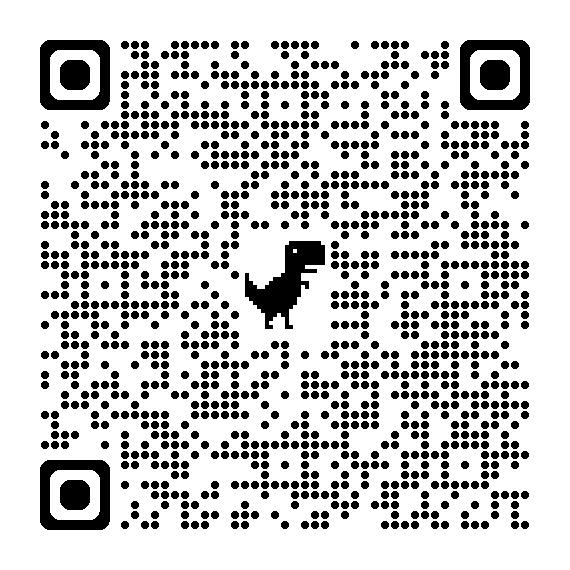
Warren
Thomas
patronizingly demand that you refrain from using the devilish ChatGPT.
A 2024 survey by the Digital Education Council, an educational artificial intelligence (AI) focused think tank, found that 86% of undergraduate and postgraduate students across 16 countries use AI tools in their studies.
I apologize to the older generations who read that and had a heart attack. AI has permeated nearly every corner of the educational world to the point that you will hardly find any WashU student who has not used AI.
With individualized secretaries now at the disposal of anyone with a device and an internet connection, a paradigm shift in academia is doubtless on the horizon, if not already underway.
This has, unsurprisingly, elicited much commotion among those who wish to herald in a new age of productivity and those staunchly opposed to the tool they think will “replace” thinking. Go home this Thanksgiving break, and you may have a grandparent
However, the notion that AI will annihilate reason in the younger generations is, itself, an argument devoid of reason. AI alarmists have misconstrued the nature of this technological revolution. AI will not replace thinking. Rather, it will magnify the difference between those who think deeply and those who don’t.
Researchers at the University of Washington and the Allen Institute for AI coined the term “Generative AI Paradox” in their 2023 study on AI’s ability to produce novel information. They found that while AI consistently outperformed humans at generating information (e.g., summarizing a book), it could not hold a candle to humans’ ability to understand and synthesize information. Studies repeatedly show that AI has no capacity to replace human creativity, ingenuity, and imagination, so it is silly to ostracize it on these

grounds.
AI has proven to be an immensely powerful tool for improving productivity; however, it should not be seen as a replacement for human skill, but instead as a complement to it. AI can scour the internet for sources, serve as an immediate tool to bounce ideas off of, and handle other menial tasks that would otherwise take a human much time. As with any tool, it can be abused, but those wise enough not to abuse it will reap the greatest benefits.
Opponents to AI, including disgruntled professors, argue that AI empowers students to cheat. But those who treat college as a means to an end and care little about learning beyond its practical benefits will find a way to circumvent the system with or without AI. Students who cheat their way through classes fool no one except themselves. They spend nearly $100,000 to learn absolutely nothing, and AI does nothing but make their intellectual laziness more efficient.
Nobody is a victim of AI or technology. If you
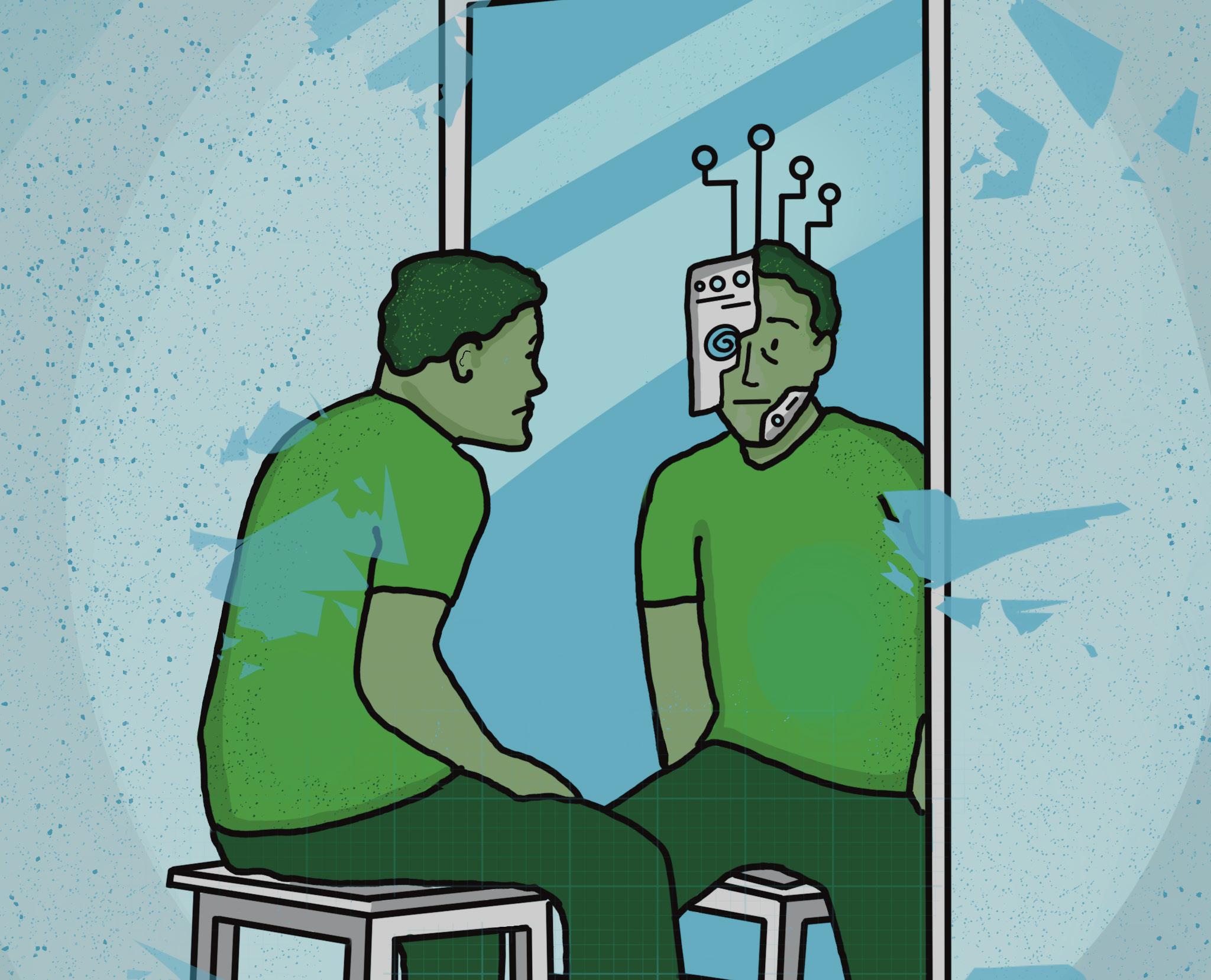
are using AI as a factory to mass produce generic, wholesale assignments, then you are complicit in your own mental atrophy. Will some students, hooked on this opium that enables their academic sloth, never develop critical thinking skills? Absolutely. But who is to say that they ever would? These are the same people who, before AI, copied SparkNotes and Chegg verbatim. This is not a new development. Turn on any ’80s or ’90s movie set in high school or college, and you are bound to see the trope of the jock paying off or bullying the nerd into writing his papers. AI doesn’t create this problem; it merely exacerbates it.
All of these points signal a more sinister cultural development: people treat college as a checkpoint to be reached rather than a real opportunity for intellectual growth. I am glad that AI is shaking the foundations of the educational world because it forces us to confront this problem. I heard a story of a class where students left
AI to do their assignments, and the TAs graded said assignments with AI. What are we doing? Frankly, if a class is an “easy A” because of AI, then it shouldn’t be offered. We’ve reached the point where some classes are just chatbots interacting with each other. What has higher education become?
Just as calculators didn’t end mathematics but exposed those who didn’t understand it, AI won’t end thinking. It will merely expose those who already don’t think much, and perhaps more importantly, expose the cultural rot that has disfigured the university system into profit-greedy corporations rife with administrative bloat. Universities have spent decades curating a pitchperfect academic profile to optimize enrollment and maximize profit
while hollowing out academic rigor. For many, it seems registration has become a precarious balancing act between grade-inflationary and weed-out classes, both of which are antithetical to the goal of education, but this is a topic worthy of its own article. AI is a mirror, and it is uncomfortable to see what it reflects: students who never cared about learning, classes that never required thinking to pass, and institutions that forgot their original mission. Right now, many people are looking in the mirror, and it’s not making them happy. They think they hate the mirror, but really, they hate the reflection.

> SELINA SON > CONTRIBUTING WRITER
What might have once been an unrealistic fear of digital dominance by artificial intelligence (AI) is now alive and in the bloodstream of online culture. From this anxiety, a reassertion of human power is taking root in the form of a slur: “clanker.”
Originating from “Star Wars,” clone troopers first used “clanker” as a slur to mock battle droids. These days, online users have revived the term as an insult against robots, AI, and
even people who defend machines or question the hostility toward them.
The slur, however, has evolved not merely to critique technology’s rise, but as a cathartic loophole through which people channel class anxieties, reenacting the rhythms of racism without consequence.
“Clanker” has evolved quickly through various social media platforms, expressing hatred toward machines and employing the preexisting language that has been used against marginalized communities. Now, users differentiate between the “hard-r”
and “soft-a” pronunciation of “clanker,” an echo of the pronunciation of the N-word. Users have also used phrases such as “wireback” or “shutdown town” (a repurposing of “sundown town” — an all-white neighborhood that enforced racial segregation) against AI, carrying clear parallels to racist insults. Others call AI “dirty tin-skinned,” language reminiscent of descriptions long used to dehumanize people of color.
While “clanker” spread through algorithms, it has also slipped into the real world, expectedly, among younger circles.


People use the term in conversations in ways that mirror online comments, carrying the same undertone of bigotry and appearing only in contexts of bigotry. This casual use normalizes the hate “clanker” carries and opens the door for other, more explicit variations to enter the conversation.
Beyond slurs, the hate also manifests in short skits and memes online (with millions of likes). In one, a “robophobic” police officer pulls over a robot and uses racial profiling, insulting the driver with slurs against their identity. In another, the creator’s future child brings a “robot partner” home, and the disapproving parent directs “dark humor” at the robot.
The casting of skits also follows a pattern: “robophobic” characters that police and segregate AI or become the victim of “machine oppression” usually take the form of stereotypically “white” characters, the default holders of racial power. Creators adopt Southern accents and wear button-downs and khakis, visually coding their characters as white, middle or upper-class figures who have historically
upheld racial hierarchies in America.
These scenarios don’t parody racism; they perform it. The “comedy” hinges on the audience’s understanding of racism and the creator’s simple substitution of the marginalized community for “robot hate.” The memes turn relatable because we are deeply fluent in the language of discrimination that “clanker” content brings into proximity. And we find it funny.
Some users say it can’t be racist if it’s about machines, but the punchline is not about technology. Instead, the joke often hinges on the basis that slurs are pleasurable to say and fun to hear.
Slurs are hate speech designed to dehumanize a specific community. By replicating the structure — swapping robots in for racial groups — users are not mocking oppression and standing “for humanity,” but rather performing hate speech safely without social cost. Some of the creators blatantly acknowledge the substitution with captions such as, “If the 2050’s become like the 1950’s (But instead it’s Robophobia).” These instances show how
the term reproduces the contempt that slurs carry against the targeted community and how “clanker” becomes a loophole to enact this discrimination.
The “clanker” trend also taps into a familiar anxiety: the fear of being replaced. The trend sprang from the idea that AI will take our jobs and invade our spaces. This exact rhetoric is currently being used to discriminate and marginalize immigrants, especially people of color. It is not hard to imagine where scenarios portraying robots as “cheap labor” drew their inspiration from.
The “clanker” meme tests how far we can recreate racism without crossing the line. “Clanker” becomes a power trip for cowardly short-form creators and normalizes discrimination for their audience. Its appeal lies in the hypocrisy of its supposed harmlessness — pitting humans against robots as if we’ve outgrown racism and hate crimes among ourselves. The word only distances us from the violence it mimics: dehumanization. So, stop using the word — even if it feels satisfying to say.

It’s the hottest question in college philosophy debates, a question that is boiling the blood of many creatives and instilling a subtle but growing fear that the very core of what makes us human is being slowly usurped and nullified by machines: Can artificial intelligence make art? It seems that AI has done a pretty good job of convincing us that it can create works comparable to those of the great masters — sometimes doing it better.
As an art history minor, this question used to enrage me. I gained a love for the masterworks I studied, and the insinuation that AI could simply “replicate” amazing art seemed like an erasure of everything I had learned. Yet the minor also gave me the tools to critically assess current arguments surrounding AI art, a debate which quickly expands into the endless controversy of what constitutes “art” at all.
Yet my experience didn’t involve having discussions about AI art in art history classes, nor did I have the philosophical groundwork necessary to critically assess what makes AI art so complex compared to human art. I decided to talk to students from Professor Megan Entwistle’s “Philosophy of Mind” class about the issue. AI art is a topic frequently mulled over in their class, as students draft papers about anything they find “philosophically engaging.”
Many students are crafting arguments that focus on AI and its likeness to human minds.
“Just because machines can produce the same output that humans can — a computer can pass the Turing test, it can write in a way that is human — doesn’t mean the process behind it is the same,” said Clara Beth Lee, a sophomore writing a paper on whether machines can think. “If we’re only looking at the output, which,
in this case, is the image AI produces, and you think that’s all that matters, then sure, that could be art. But a lot of human artists would say that’s not really how it works. It takes hours and hours of work to create magnificent pieces of art. … It takes years of study, of observing the world and having feelings about it — an artist would tell you that’s the part that matters more.”
Lee makes a good point: a machine’s effortless automatic processing seems far less impressive than a human artist’s lifetime dedication to mastering the craft, overcoming endless trial and error to achieve perfection.
But not all art is created equally. In fact, some of the most groundbreaking art ever made took no time at all.
Take Marcel Duchamp’s “L.H.O.O.Q.,” a piece far more obscure than his famous “Fountain” but just as controversial. It is, in essence, a postcard of the Mona Lisa which he purchased, drew a mustache on with a pen, and wrote the letters “L.H.O.O.Q.” at the bottom. Or consider the famous duct-taped banana, called “Comedian,” by artist Maurizio Cattelan. Both pieces probably took around five minutes. Both also directly challenged what “art” could mean, stripping away previous markers of “real” art, like originality, skill, and authenticity — qualifications which continue to be challenged by AI art. Many art critics did not, and still do not, believe these pieces to be works of art.
Yet both works have been featured in museums, sold at auctions, and studied in art history classes, including here at WashU. My art history class on Dada and Surrealism taught this conceptual art-making process as a form of “transubstantiation”; the objects become art, without physically changing, by way of ritual (the artmaking process) and perception (we think it’s art, so it is). In this sense, one could see how
I am an editor. Though I probably get paid less than a dime per hour, it’s my job, and I love it. Still, it is a weird time to work for a newspaper. While I have spent the last few years developing my editing skills, I’ve watched others grow increasingly dependent on artificial intelligence as a replacement for human editing. Unsurprisingly, this concerns me. It should probably concern you, too.

AI “art” could be perceived as capital-A Art. By whatever process, the machine is creating art. It doesn’t matter how long it takes or what techniques it has or hasn’t mastered. And, if we decide it’s art, then it has to be.
Many other students agree with Lee, arguing that the intention of an artist matters significantly in discerning “real” art. Cassandra Leo, a junior in the “Philosophy of Mind” class, remarked that “art should have functionality and intention behind it, which AI doesn’t have, because it’s being told by a person what to do in the first place.”
The same argument is often used when explaining why animals can’t make “real” art.
For instance, Pigcasso, the famous “painting pig,” was given plenty of instructions and treats before he began putting paintbrushes to canvas. Any “artworks” he produced were, unfortunately for his fans, directed by his trainer. Even when Pigcasso would take to the canvas at his own volition, it was for the singular purpose of gaining a reward. In that case, should we think of AI “artists” in the same way we think of animal “artists”: vectors of human intention, neither being in full control of what (or when) they can create?
To further complicate the matter, artists have also begun using AI’s generative abilities as a tool to create their own artworks. In the case of artist and WashU Chair of MFA in Visual Art Tiffany Calvert, using AI in art is an important aspect of critiquing our society’s growing reliance on it. Unlike corporate-owned generative AI programs, however, Calvert’s unique program used the help of researchers at the McKelvey School of Engineering to create a model that exclusively uses her own collected dataset of 16th century Flemish and Dutch artworks.
“My current works are very thick abstract

paintings on top of reproductions of machine-generated imagery,” Calvert said. In these works, Calvert paints colorful, abstract brushstrokes over and out of the AI artwork, an important part of her process, which, as she puts it, “pits human against digital. This contrast, together with the uncanny and irresolvable nature of the paintings are intended to demonstrate or act out the failures, biases, and dangers of AI.”
Her ingenious meshing of man and machine produces groundbreaking masterpieces, which prompt audiences to question the ways we use this powerful technology. For Calvert, this has always been an essential role of the artist, to expose the different and subversive ways that knowledge can be used.
“Artists have always adopted new technologies early on and used those technologies in sometimes unconventional or even ‘incorrect’ ways. … They are asking us not to take new technologies for granted, but to literally turn them inside out or see them through a different lens in order to consider how those technologies are changing us and the world,” Calvert said. In Calvert’s case, it seems, AI’s generative tech can expand human art rather than limit it.

I won’t explain to you why you shouldn’t use AI to write your essays; there are thousands of other articles that do that. Plus, if AI does write your papers, it’s probably too late. There is another crowd of people, however, whom I am interested in speaking to. They often do their own writing, yet the editing is relegated to ChatGPT. It’s quicker that way — but I don’t think that’s the main reason they do it. I suspect the proliferation of AI editing has something to do with vulnerability. After all, writing is quite vulnerable: it reflects one’s
own unique ideas and language, one’s personhood. When we share our writing with others, we want it to look perfect because we want to look perfect. Of course, we are nowhere near perfect beings. Still, the desire for perceived excellence motivates many to
AI-edit their writing long before another pair of human eyes lays rest to their work. Even simple edits like adding punctuation or fixing grammar can manipulate a writer’s voice and, consequently, their meaning.
I am not mad at these writers. As AI has
But there comes another crucial viewpoint when considering the difference between human art and AI “art.”
Ada Sensoy, a junior, puts it best: “AI can’t create happy accidents.” It seems, then, that art does not rely completely on intention, but may rather hinge on the unintentional: mistakes that only humans can make, which, in some cases, become a crucial part of the artwork itself.
Another great example from Duchamp is “The Bride Stripped Bare by her Bachelors, Even,” also known as “The Large Glass.” It is — you guessed it — two large slabs of glass, inlaid with abstract forms. You can imagine, then, the “happy accident” that occurred while the 9-foot piece was transported from the Brooklyn Museum. Duchamp, a lover of the unintentional in art, decided to leave the shattered piece as it was: broken, yet more complete than ever. Often, it is these “mistakes” by famous artists which solidify their names in the canon, and Calvert agrees.
“It doesn’t occur to me to worry about AI replacing artistic creativity or painting specifically — the most interesting paintings are full of human error and quirkiness,” she said.
AI also can make “mistakes,” much like
become more accessible, many have realized the power of an outside editor. The issue is, they misunderstand the importance of human editing, not just for their writing, but for themselves and their community.
As a Forum editor, I am awarded the rare privilege to see unfinished writing from hundreds of different people. I am forever grateful for each writer’s willingness to share their imperfect work with me and the Forum staff. In exchange, we invest our time and energy into the words of those who write for our paper, whether we agree with them or not. What is important is that we are willing to engage with other people’s imperfect work and still envision their potential as writers. To edit their work, then, is an investment into the WashU community (or at least those who read
any artist, but it can’t “defy its commissioner,” so to speak, the way Michelangelo directly disobeyed Pope Julius II endless times during the process of painting the Sistine Chapel. AI has to follow our instructions… for now.
It seems that, until the day AI inevitably achieves self-control and decides to create art at will, we can’t conclusively say that these hyperintelligent machines are capable of “making art,” at least by our current definition. Human art can defy; it can mess up; it can disobey. It can be made with the greatest of all intentions or with the simple intention of having no intention. But this process of “defining” art, of boxing it in and categorizing it for our own comfort, limits its greatest purpose: to express an aspect of the human experience, which has infinite interpretations. This, of course, is the great failure of AI art: It cannot create as a reaction to the bewildering experience of being alive. For a software so focused on achieving perfection, it has ironically revealed how much we as a society actually appreciate the flaws of art, imperfections which, when noticed, reflect back to us our own humanity.

Student Life). It brings us together, as writers and editors, towards a greater cause: civil discussion. While Forum is a particular example, all editing builds community. Whether it’s your friend or your grandma, letting others edit your writing offers the opportunity for them to engage with more than just your work, but also your life. Think of the reasons why we write today: an essay, a job application, a best man’s toast, or a eulogy. No matter the occasion, when we edit each other’s writing, we invest in the work and livelihood of each other. We edit because we love. We edit because we are human. So, go out and share your work with someone you trust, whether that be a friend, a parent, a teacher, or a mentor. Be vulnerable. Be edited.

On Oct. 22, Chancellor
Andrew D. Martin took a stance against the Trump administration’s latest attack on higher education. It’s the most public confrontation the University has had with the administration to date, longawaited by many students and faculty.
On Oct. 17, the Trump administration met with eight universities about their “Compact for Academic Excellence in Higher Education,” including WashU. The compact offered preferential treatment for federal funding in exchange for several policy changes aligned with Trump’s political goals.
In an email to faculty, Chancellor Martin said he wouldn’t sign the proposed compact, as he wouldn’t sign a document that abridges WashU’s institutional values and missions, including “academic freedom, access, free expression, and research integrity.” He didn’t indicate whether he would continue discussions with the administration about the compact. Other universities also rejected the compact in its current form,
including Dartmouth College, University of Arizona, and Massachusetts Institute of Technology. Others took a different approach — Vanderbilt University’s chancellor, for example, indicated that they were not agreeing or rejecting the compact, but would be providing feedback instead.
We strongly support Chancellor Martin’s rejection of this compact. The University administration should consider the overwhelmingly positive feedback it received on its decision as a sign the WashU community wants the University to take an explicit stance against the current attacks on higher education. Moving forward, WashU needs to continue to clarify its stance on Trump administration attacks on higher education and make decisions that defend and are consistent with the University’s mission and values.
We believe it is crucial to reiterate the points in the compact that directly violate University values and to urge administrators to stand firm to these principles, especially if Chancellor Martin continues to negotiate the terms of the
compact:
The Trump compact required universities to concede that “academic freedom is not absolute.” On the contrary, academic freedom is at the core of higher education. The WashU Mission and Vision statement affirms this value, striving to “foster freedom of inquiry and expression of ideas in our research, teaching and learning.” Beyond the compact’s explicit belittlement of academic freedom, its mere existence threatens this principle by demanding universities to conform to institutional and educational policies in exchange for federal funding.
The compact demands that universities control the views and teachings of faculty, requiring that they “transform or abolish institutional units that purposefully punish, belittle and even spark violence against conservative ideas.” This requirement undermines the purpose of a university to foster diverse perspectives by forcing institutions to censor any teaching opposed to conservatism.
Chancellor Martin may continue to discuss the terms of this agreement, but any
LEVI CUTLER
CONTRIBUTING
WRITER
When I was younger, I would frequently say to my parents, “I’m bored!” My mom would respond with the refrain, “If you’re bored, you’re boring.” As kids, it was so easy to find ourselves in a state of boredom. Days felt incredibly long. Eternal vast openness, devoid of structure. The feeling was almost irritating. It is only now, deep within the busyness of university, that I have come to appreciate the immense privilege that the feeling of boredom affords us.
University of California, Berkeley Professor of Philosophy Alva Noë writes in his book “Strange Tools: Art and Human Nature” that boredom is “a distinct emotional state, vaguely painful, that sense of being trapped in the unending and meaningless, is available only in the absence of structure, a plan, a task, or an obligation.” Modern-day distractions beckon you to exit this space.
This slightly painful feeling offers you something that no amount of music or chatting can solve. It is this state of nothingness that paves the way for “everythingness.” I
believe that the moments of our life filled with modern-day distractions could be replaced with moments of boredom. Such boredom provides a blank slate for true contemplation, internal reflection, and deep thought about the world. In doing so, we can cultivate better lives for ourselves.
We are facing a deficit of boredom. On a walk from Siegle Hall to Lopata, the majority of students are preoccupied with some type of earbud or over-the-ear headphone activity. Music. Podcasts. Calls. When we’re not doing that, we’re doing homework, socializing, working, and participating in club activities. Noë writes, “The preconditions for boredom are absent in adult life.” As we grow older, our lives only become busier. Subsequently, our lives get less boring.
I concede that adults should not be as bored as toddlers. As adults, we organize our lives around a series of experiences that demand titles.
We remember our life experiences by name: “dinner last Saturday,” “my internship in New York,” “that horrible first date.” Organizing our lives around recognizable monikers is largely accepted

agreement to change the University’s operations, including education, hiring and admissions practices, and discipline in spite of the needs of students and staff, is a violation of academic freedom. We must resist government control over American universities at all costs.
The Trump administration’s anti-DEI rhetoric also rang true in the compact, as they required universities to ban the implicit or explicit consideration of race and sex in admissions and to define sex based on biological functions, banning transgender people from playing on sports teams or using bathrooms aligned with their gender. Signatories are also required to have standardized testing for all applicants, a practice that is inherently biased against students from low socioeconomic backgrounds. These guidelines go directly against WashU’s central value to “welcome students, faculty and staff from all backgrounds to create an inclusive, equitable community.”
The compact also called on universities to cap international undergraduate
in practice amongst citizens of capitalist societies. One must be able to define time and organize oneself around such commitments (job interviews, meetings, deadlines) to find success in a capitalist society. We organize our lives around time so we can succeed in this world.
While our lives are generally organized for the better, we have filled any other empty gaps in our schedules with the aforementioned distractions of modern-day life — music, social media, and cellular devices more generally.
I am not asking you to sell your possessions, move to Montana, and detach from the developed world. Instead, I am arguing that we can both succeed professionally in the world and still tap into this state of radical boredom, a kind of boredom that creates internal reflection and, subsequently, allows us to begin answering life’s big questions.
But why is it that 21st-century humans struggle with boredom? Harvard University psychologists conducted experiments on the disengaged mind. Participants had to entertain themselves with their thoughts for 15 minutes, but could also choose to
receive an electric shock. The results showed that many participants preferred receiving negative stimulation over no stimulation at all.
One of the most frightening experiences for many people is the existential thoughts that arise when they sit free of distraction and let their minds activate the “default mode network.” This network plays an important role in humans’ introspective mental activities, where they spontaneously and deliberately engage in everyday life. For example, when you’re waiting in line without your phone and your mind wanders. As humans in the technologically advanced world, we don’t like this feeling.
When you think about nothing, you begin to consider big questions about the meaning of the world. One of the reasons we have such an explosion of depression and anxiety in our society today is that people actually don’t know the meaning of their lives. We have eliminated opportunities to think about these questions by succumbing to the addictive powers of modern-day distractions every time we tap into the “default mode network.” It’s an endless
student enrollment to 15%.
This demand comes alongside the myriad of threats that international students, faculty, and staff face under the staunch anti-immigration stance of the Trump administration. Supporting, protecting, and continuing to admit these students along with international faculty and staff is central to WashU’s mission to expand access and cultivate inclusivity for different backgrounds.
In response to the Trump administration’s proposal to apply a $100,000 fee for people applying for H1-B visas to work in the U.S., Chancellor Martin rightly spoke to affirm the importance of international hires. Currently, the University sponsors around 285 H-1B visas per year. We must support the employment of international graduate students, faculty, and staff.
International students at all levels face the threat of deportation for publicly sharing political beliefs that oppose Trump’s. We urge the University to protect all international students regardless of their political beliefs. This protection would take the
loop that eliminates the possibility of boredom.
Boredom is uncomfortable, but we grow in moments of discomfort. The discomfort is recognizable — the feeling of a sore arm or C on your test. But the growth is recognizable, too — a bigger bicep or the feeling of an A on your test. Most don’t make sense of the vaguely painful feeling of boredom driving the search for meaning in our lives.
But this is, perhaps, the area of our lives that we humans should invest our time in the most. Without some semblance of meaning in our lives, we feel lost. So, I implore you
form of informing students of their legal rights, providing access to support in the case of visa termination, and ensuring compliance with current legal protections for those students.
While Chancellor Martin may continue talks with the Trump administration about the compact, we implore him and other administrators to stand by the values and goals we have committed to as a University. Moreover, we call on him to take stances beyond the scope of this compact, as the Trump administration continues to make decisions impacting the WashU community, both on and off campus.
The community support for WashU’s rejection of the compact demonstrates that our community doesn’t want silence from our administration; we want outspoken commitment to fighting for freedom and equity for all students, faculty, and staff. These beliefs should be expressed through public statements alongside material action.
Staff editorials reflect the opinion of the majority of our editorial board members.
to go out and watch paint dry, watch grass grow, stare up at the sky, and let your mind wander. Let yourself be bored. You will get more comfortable in the vaguely painful state of boredom. You’ll start exploring the biggest questions about our meaning and purpose on this earth. It is boredominduced internal reflection that often leads to more happiness and outward virtue. I look back to the refrain, “If you’re bored, you’re boring,” and I think it’s OK to be bored, for what a privilege it is to think big thoughts in a world trying to keep them small.

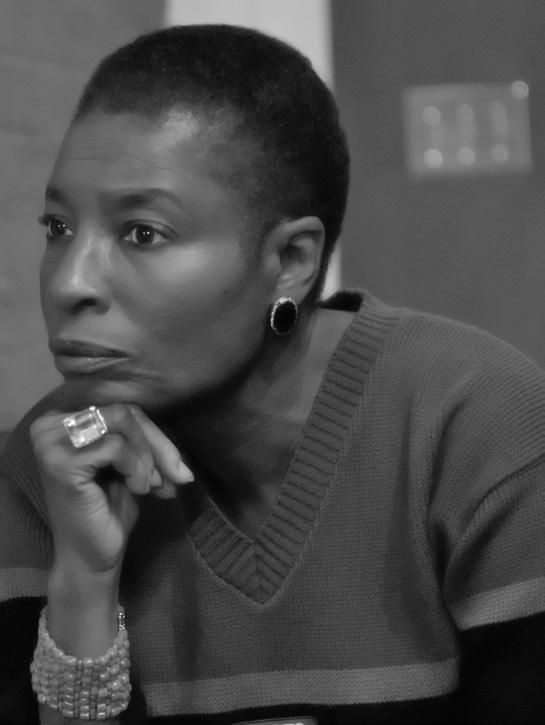
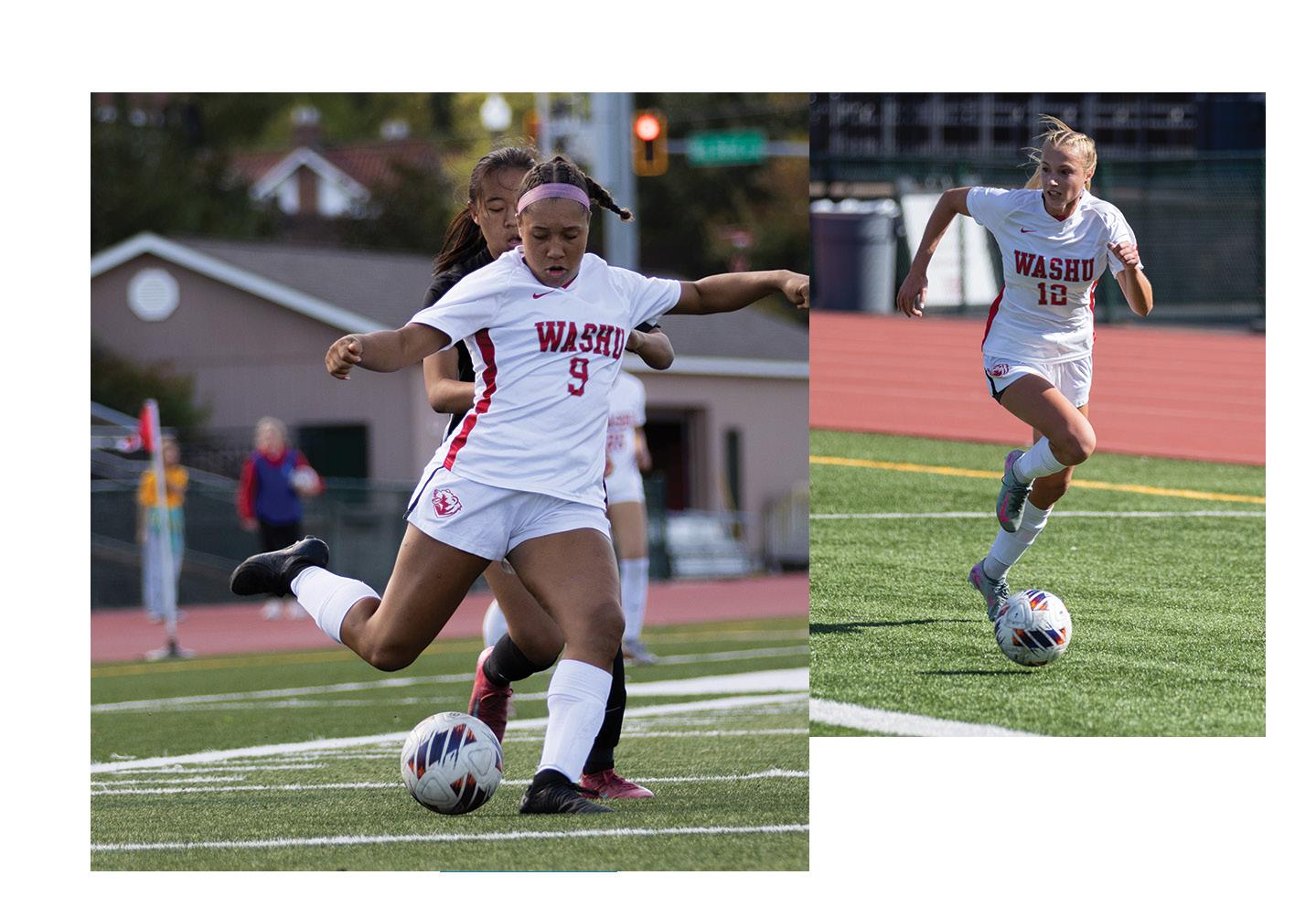
game unbeaten streak, dating back to Dec. 2, 2023

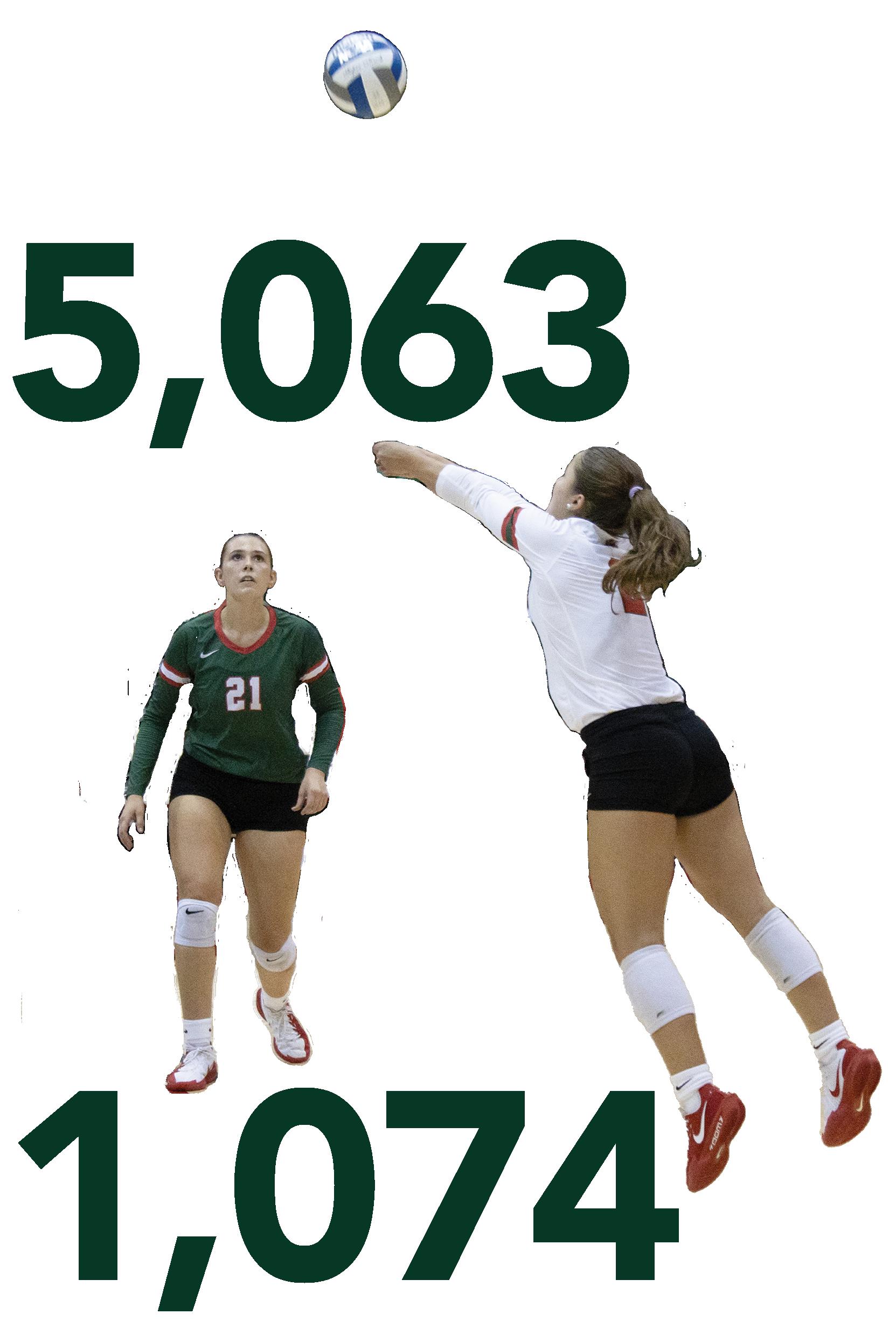
career digs by junior libero Ellie Laird, the 27th player in WashU history to reach 1,000 digs.
MSOC from page 1
Without junior defender Quentin Gomez and limited minutes from junior defender Nik Avillo, the Yellowjackets completely took over in the second half, ending the game with 21 shots compared to WashU’s 12. Despite the three goals, L’Hommedieu still recorded eight saves in the game.
Right away, Rochester capitalized on a corner kick, scoring off a deflection and catching WashU’s defense off guard. The relentless pressure continued, leading to seven Rochester shots, and eventually leading to another goal to take their first lead of the game. A last-ditch attempt from Wirtschafter was blocked,
giving Rochester a 3-2 victory. The loss ended WashU’s 10-game win streak as well as their shutout streak dating back to Sept. 27. When asked about the quick turnaround, head coach Andrew Bordelon said, “We talk a lot every day about the next action, next moment. And ultimately, when you have a game that’s so close after a Friday night, you don’t have time to dwell on it. So the guys did an excellent job of turning that page.”
WashU did just that, as Bordelon’s squad knew how crucial a game this was for the UAA rankings. It only took Kochen 25 minutes to
career assists by senior setter Sam Buckley. Buckley broke the 19-year program record on Oct. 26.
3
Of total yards gained on run plays. Senior Fred Ware and juniors Matthew Kinoshita and Levi Moore have combined for 15 rushing touchdowns.
X C the women’s cross country’s average placement in five tournaments this fall:
4.4
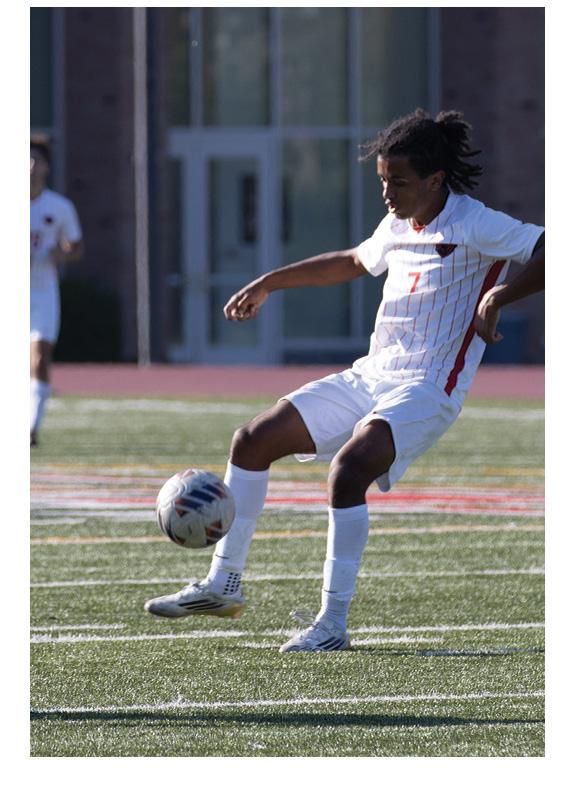
ranked D-III team in the nation, their highest ranking in program history.
find the back of the net off a corner, his sixth goal in the Bears’ last seven contests, putting them up 1-0 early. WashU continued their persistent attack, tallying six shots and four corners in the half, playing with more intensity than in their previous game.
Emory started the second half attempting to match WashU’s energy. However, with Avillo and Gomez back in the lineup, the Bears’ defense was at full strength, making strong plays on the ball and anchoring the back line. This tenacity is something that Bordelon emphasizes and prides the WashU team on.
“We are one of the better
teams in the country with winning first and second balls,” Bordelon said. “I thought that we were unbelievable in our duels and showed a lot of composure afterwards to knock the ball around.”
Growing more agitated, Emory continued to bombard the Bears’ defense, taking continuous long throw-ins that led to six corners and nine shots in a span of 30 minutes. The Bears’ offense had opportunities to provide insurance, as Wirtschafter had a one-onone with the goalie in open space, yet was unable to capitalize. For the final stretch of the game, WashU faced a barrage of shots from the
Eagles, desperately trying to tie the game.
“The end of the game is always tense, especially in UAA games,” L’Hommedieu wrote. “There are usually one to two big moments I know I have to be ready for. My focus is always on what I can control and not trying to overplay or force anything to happen.”
After some crucial defense in the final ten minutes, the Bears handed Emory their first loss of the season, keeping WashU atop the rest of the conference.
“Emory is a really good team,” Bordelon said. “They tested us on many occasions, particularly in the second
half, but our boys rose to the occasion.”
The 1-0 victory puts WashU back in the win column and marks their fifth shutout of the year, especially impressive against a high-level Emory offense. The Bears aim to continue their regular-season success against two more conference opponents, New York University and the No. 7 the University of Chicago, both at Francis Field. The matchup against Chicago on Nov. 8 will determine the UAA conference champion. With just two more games left, the Bears can achieve their 10th conference championship in program history and their first since 2021.
5,000 assists. 2,914 days.
The third University Athletic Association (UAA) Round Robin on Sunday, Oct. 26, marked two momentous milestones for WashU women’s volleyball — both on the individual level and as a team.
With an impressive 32 assists in the first match against Brandeis University, Sam Buckley achieved 5,000 career assists — a new program record.
And in the day’s second match, WashU defeated longtime rival Emory University for the first time in eight years.
With the two wins, WashU’s conference slate is complete. They are second in the UAA standings with a 5-2 conference record and have three weeks of preparation ahead of the UAA championships on Nov. 15.
North Central 1-3 (2025, 25-12, 23-25, 20-25)
The Bears’ weekend started on Friday, Oct. 24, when they took on North Central College in a standalone nonconference match.
The first set began with both teams keeping the score tight at 7-7. However, an attack error by WashU and 3 kills gave the Cardinals the momentum for 2 runs (8-0 and 5-2), closing the set out at 25-20.
In the second set, the Bears were able to reset, jumping to
WSOC from page 1
Less than two minutes into the second half, the Eagles evened the score. Emory forward Kaitlyn Nimmer received a leading pass and got a rare shot off sophomore goalie Kassidy Lanthier, who came off her line too late in an attempt to make a save. Nimmer’s goal was just the third that Lanthier had conceded this year, and just the fourth team goal conceded all season.
a 9-7 lead. Determined to tie the score, the Bears moved dynamically across the court to extend the lead to 19-10. A 6-point run and kills by junior right-side hitter Leah Oyewole and first-year Abby Krause allowed WashU to dominate the set with a 25-12 finish.
The momentum from the second set carried through into the third, with the Bears holding on to a strong lead of 17-11. The Cardinals responded with a 7-1 run to tie the set at 18-18. North Central didn’t stop there, taking control over the set and closing it out 25-23.
In the fourth set, WashU hit the ground running with a 17-11 lead. However, a 12-2 run from the Cardinals put the score at 23-19. North Central held their lead with 3 strong kills, closing the match at 25-20.
Buckley, however, was not deterred by the loss. Contributing 44 assists in the game, she inched closer to breaking the record of 4,995 set by Stephanie Habif in 1996. Buckley said they used this match as an opportunity to regroup by focusing on the things they did well.
“After the North Central game, we had a lot of good, productive conversations as a team,” Buckley wrote in a statement to Student Life.
“We reinforced our trust in one another and reminded ourselves that we’re capable of winning any match we play.”
However, the tied score did not put a damper on the Bears. After Emory’s goal, WashU quickly refocused after a team huddle. In the next five minutes, WashU took three shots, two of which were on goal.
“We all like to get together and remind ourselves that we’re on the same page and we’re all going to lock in, and we don’t have to be phased by that,” Cannon said. “[In the huddle, we discussed] how can
Brandeis 3-0 (25-20, 2516, 25-14)
WashU, looking to brush the last match off, started strong against Brandeis University. Buckley, going into the game with 4,971 assists, had her eyes set on the assist record. She moved dynamically across the court to secure the first set. Two kills and an attack error by the Judges allowed WashU to extend their lead to 17-11, and sealed their victory at 25-20 with a kill by junior Naya Ohuabunwa.
In the second set, WashU got off to a 24-12 lead; here, Ohuabunwa closed the set with a kill assisted by Buckley to secure the 25-16 win and a 2-0 match lead.
After finishing set two with three sets to beat the record, every set and play mattered for Buckley.
“My family and former WashU volleyball alumni [were] at the game,” Buckley wrote.
The Judges took an early 2-1 lead. The Bears, however, squashed any hope for a longer match with a 6-0 run, putting the score at 7-2.
The crowd held their breath as Buckley set up each ball. On a perfectly timed assist to Oyewole, Buckley delivered her 4,996th assist, surpassing the almost 20-year-old record.
“It was really special to hit that milestone … and to do it during a win made it even better,” Buckley wrote.
Buckley finished the match with 32 assists — nearly
we come together, take a quick reset, and then come out with energy firing.”
With just 10 minutes remaining, Lanthier made a crucial save. After the save, Emory headed Lanthier’s punt to a dangerous area, where the ball found its way to WashU’s speedy Clemons. In her classic fashion, Clemons beat three Emory players to the ball and deposited it into the low left corner of the goal to put the
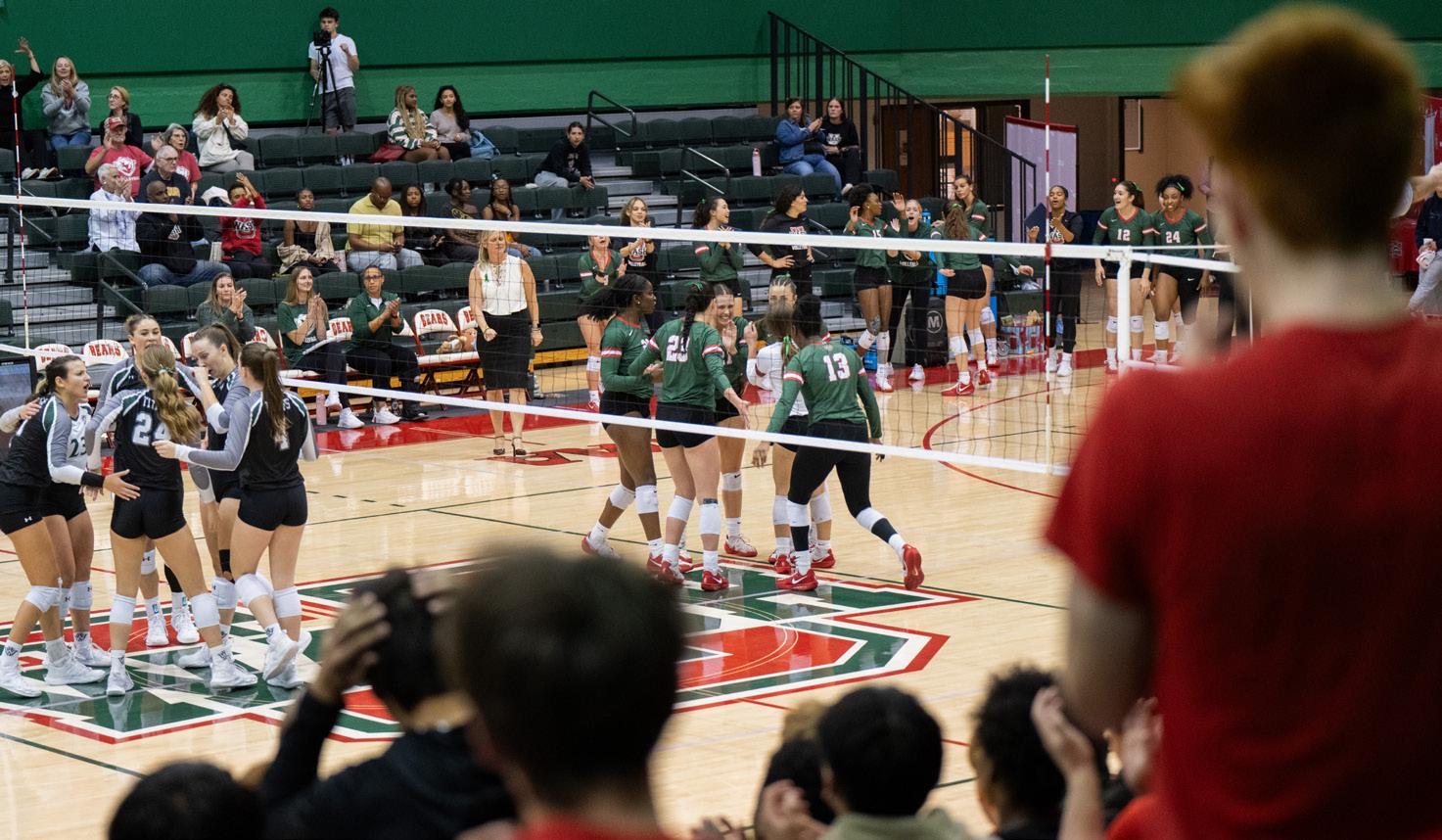
doubling Brandeis’s total of 17. While the Judges presented a good case, Buckley and the Bears ultimately ruled the court.
Emory 3-2 (25-27, 2426, 25-19, 25-12, 16-14)
The match against Emory, however, was a much closer contest. The score remained dead even throughout the first set, with neither team leading by more than 2 points. Ultimately, the Eagles edged the Bears out, 25-27.
While Emory took a 9-1 lead to start the second set, the Bears roared back with an even more dominant 11-0 stretch, propelled by a 10-point serving run by junior libero Ellie Laird.
“Even when we were down by eight points, our morale stayed high as everyone genuinely believed we could turn it around,” Buckley wrote.
Bears up 2-1.
Emory pushed hard late in the second half, but could not find the back of the net. With their 2-1 win, WashU handed Emory its first loss of the 2025 season, while extending its own unbeaten streak to 41 games.
Conlon credited the team’s success this weekend to a team effort.
“I thought the [midfield] did a really good job all weekend,” Conlon said. “[Junior] Sophie
“Our defense was gritty and our hitters were putting the ball away.”
Ultimately, the Bears went on to lose by another close margin, 24-26. But their determination and high morale paid off moving forward.
WashU dominated the next two sets. In the third, they took an early lead and coasted to a 25-19 victory. And while the fourth set started even, the Bears finished with an impressive 9-2 stretch to win by the largest margin of the match, 25-12.
The fifth set, however, was another close contest, with WashU and Emory tying at 12, 13, and 14. However, the Eagles ultimately cracked under the pressure, and WashU took the match point on an Emory attack error to win 16-14.
The Bears eclipsed the Eagles in every offensive
Viscovich and [sophomore]
Kate Martin really did a wonderful job of setting the tempo of play for the entire team. So I think those two were critical in what we were doing this weekend.”
After a weekend of two games on the road, WashU will focus on recovery before preparing for its next match, which will be against conference rivals No. 24 New York University (NYU) at home on Saturday,
category, blocks, and digs. Oyewole led WashU’s attack with a career-high 28 kills.
Both Oyewole and Buckley were named UAA athletes of the week following their impressive performances. But beyond individual successes, the match against Emory marked a historic victory for WashU. The last time the Bears beat the Eagles dates back nearly eight years to Nov. 4, 2017, when they won the conference title. Looking ahead to this year’s tournament, Sunday’s victory proves that the Bears are ready to take on the UAA’s best and come out on top. Before then, the Bears will try to finish the regular season strong against three non-conference opponents: Greenville University on Nov. 5 and both DePauw University and Millikin University on Nov. 8.
Nov. 1, at 1:30 p.m. If the Bears win their next game, WashU will win their third consecutive UAA championship.
“The transition is: get home, get a good night’s sleep, study a little bit, and we’ll get back to work on Tuesday,” Conlon said. “But right now, after a four-day travel trip, it is, get back to St. Louis and get in our beds and rest up. We’ll worry about NYU in a couple of days.”




